#first dynasty of lagash
Text
By the end of the second millennium, the religious thinkers of Mesopotamia saw the cosmos as controlled and regulated by male gods, with only Ishtar maintaining a position of power. When we see such a pattern of theological change, we must ask whether the religious imagery is leading society, or whether it is following socioeconomic development? Was the supplanting of goddesses in Sumerian religious texts an inner theological development that resulted purely from the tendency to view the world of the gods on the model of an imperial state in which women paid no real political role? Or does it follow in the wake of sociological change, of the development of what might be called "patriarchy"? And if the latter is true, is the change in the world of the gods contemporary to the changes in human society, or does it lag behind it by hundreds of years? To these questions we really have no answer. The general impression that we get from Sumerian texts is that at least some women had a more prominent role than was possible in the succeeding Babylonian and Assyrian periods of Mesopotamian history. But developments within the 600-year period covered by Sumerian literature are more difficult to detect. One slight clue might (very hesitantly) be furnished by a royal document called the Reforms of Uruinimgina." Uruinimgina (whose name is read Urukagina in earlier scholarly literature) was a king of Lagash around 2350 B.C.E. As a nondynastic successor to the throne, he had to justify his power, and wrote a "reform" text in which he related how bad matters were before he became king and described the new reforms that he instituted in order to pursue social justice. Among them we read, "the women of the former days used to take two husbands, but the women of today (if they attempt to do this) are stoned with the stones inscribed with their evil intent." Polyandry (if it ever really existed) has been supplanted by monogamy and occasional polygyny.
In early Sumer, royal women had considerable power. In early Lagash, the wives of the governors managed the large temple estates. The dynasty of Kish was founded by Enmebaragesi, a contemporary of Gilgamesh, who it now appears may have been a woman; later, another woman, Kubaba the tavern lady, became ruler of Kish and founded a dynasty that lasted a hundred years. We do not know how important politically the position of En priestess of Ur was, but it was a high position, occupied by royal women at least from the time of Enheduanna, daughter of Sargon (circa 2300 B.C.E.), and through the time of the sister of Warad-Sin and Rim-Sin of Larsa in the second millennium. The prominence of individual royal women continued throughout the third dynasty of Ur. By contrast, women have very little role to play in the latter half of the second millennium; and in first millennium texts, as in those of the Assyrian period, they are practically invisible.
We do not know all the reasons for this decline. It would be tempting to attribute it to the new ideas brought in by new people with the mass immigration of the West Semites into Mesopotamia at the start of the second millennium. However, this cannot be the true origin. The city of Mari on the Euphrates in Syria around 1800 B.C.E. was a site inhabited to a great extent by West Semites. In the documents from this site, women (again, royal women) played a role in religion and politics that was not less than that played by Sumerian women of the Ur IlI period (2111-1950 B.C.E.). The causes for the change in women's position is not ethnically based. The dramatic decline of women's visibility does not take place until well into the Old Babylonian period (circa 1600 B.C.E.), and may be function of the change from city-states to larger nation-states and the changes in the social and economic systems that this entailed.
The eclipse of the goddesses was undoubtedly part of the same process that witnessed a decline in the public role of women, with both reflective of fundamental changes in society that we cannot yet specify. The existence and power of a goddess, particularly of Ishtar, is no indication or guarantee of a high status for human women. In Assyria, where Ishtar was so prominent, women were not. The texts rarely mention any individual women, and, according to the Middle Assyrian laws, married women were to be veiled, had no rights to their husband's property (even to movable goods), and could be struck or mutilated by their husbands at will. Ishtar, the female with the fundamental attributes of manhood, does not enable women to transcend their femaleness. In her being and her cult (where she changes men into women and women into men), she provides an outlet for strong feelings about gender, but in the final analysis, she is the supporter and maintainer of the gender order. The world by the end of the second millennium was a male's world, above and below; and the ancient goddesses have all but disappeared.
-Tikva Frymer-Kensky, In the Wake of the Goddesses: Women, Culture, and the Biblical Transformation of Pagan Myth
#Tikva Frymer-Kensky#Ishtar#female oppression#mesopotamian mythology#goddess erasure#ancient history#religious history
26 notes
·
View notes
Text
Mesopotamia is the region in southwestern Asia where the world's earliest civilization developed. The name comes from a Greek word meaning "between rivers," referring to the land between the Tigris and Euphrates rivers¹. Mesopotamia has a long and rich history that spans from the prehistoric period to the Arab conquest in the 7th century CE. Here is a brief timeline of some of the major events and periods in Mesopotamian history:
- **Prehistoric period (c. 10,000-3500 BCE)**: The earliest human settlements in Mesopotamia date back to the Paleolithic era. During the Neolithic era, agriculture and animal domestication were introduced, leading to the development of villages and towns. The Ubaid period (c. 6500-3800 BCE) saw the emergence of the first temples, irrigation systems, and social stratification. The Uruk period (c. 4000-3100 BCE) witnessed the rise of the city of Uruk, the invention of writing (cuneiform), and the formation of the first states.
- **Early Dynastic period (c. 2900-2350 BCE)**: This period is characterized by the emergence of city-states, each ruled by a king who claimed divine authority. The most prominent city-states were Uruk, Ur, Lagash, Kish, and Nippur. They often competed and fought with each other for resources and prestige. The Sumerian King List, a legendary record of kingship, dates from this period. The Sumerians also developed a rich literature, art, mathematics, astronomy, and law.
- **Akkadian period (c. 2350-2150 BCE)**: The Akkadian Empire was the first empire in history, founded by Sargon the Great, who conquered most of Mesopotamia and parts of Syria, Anatolia, and Iran. The Akkadians adopted the Sumerian culture and language, but also introduced their own innovations, such as the use of seals and the development of a postal system. The Akkadian Empire collapsed after a series of invasions by the Gutians, a nomadic people from the Zagros Mountains.
- **Neo-Sumerian period (c. 2112-2004 BCE)**: The Neo-Sumerian period saw the revival of the Sumerian city-states, especially Ur, which became the capital of the Third Dynasty of Ur. The kings of Ur, such as Ur-Nammu and Shulgi, restored the Sumerian civilization and expanded their territory to include most of Mesopotamia and parts of Elam and Syria. They also built monumental ziggurats, temples, palaces, and canals, and codified the laws and administration. The Neo-Sumerian period ended with the invasion of the Elamites and the Amorites, who destroyed Ur and established their own kingdoms.
- **Old Babylonian period (c. 2000-1595 BCE)**: The Old Babylonian period is marked by the rise of Babylon, a city founded by the Amorites, who adopted the Akkadian language and culture. The most famous king of Babylon was Hammurabi, who unified most of Mesopotamia under his rule and issued the Code of Hammurabi, one of the oldest and most influential legal codes in history. The Old Babylonian period also saw the flourishing of literature, science, art, and religion, as well as the emergence of the Old Assyrian Empire in the north, which was known for its trade and diplomacy. The Old Babylonian period ended with the invasion of the Hittites, who sacked Babylon and weakened its power.
- **Kassite and Middle Assyrian period (c. 1595-1155 BCE)**: The Kassites were a people from the Zagros Mountains who conquered Babylon and ruled it for about 400 years. They adopted the Babylonian culture and religion, but also introduced the use of horses and chariots, and established diplomatic relations with other powers, such as Egypt and the Hittites. The Middle Assyrian period saw the expansion of the Assyrian Empire, which reached its peak under Tiglath-Pileser I, who conquered parts of Anatolia, Syria, and Babylonia. The Assyrians were known for their military prowess, brutality, and monumental architecture.
- **Neo-Babylonian period (c. 626-539 BCE)**: The Neo-Babylonian period was a time of cultural and political revival for Babylon, which regained its independence from the Assyrians and rose to prominence under the Chaldean dynasty. The most famous king of this period was Nebuchadnezzar II, who rebuilt Babylon into a magnificent city, with the Hanging Gardens, the Ishtar Gate, and the Tower of Babel. He also conquered Jerusalem and deported many Jews to Babylon. The Neo-Babylonian period ended with the conquest of Cyrus the Great, the founder of the Persian Empire, who captured Babylon and freed the Jews.
- **Achaemenid period (c. 539-331 BCE)**: The Achaemenid period was the time when Mesopotamia was part of the Persian Empire, the largest empire in history at that time. The Persians respected the cultures and religions of their subjects, and allowed a degree of autonomy and self-government. They also built roads, canals, and postal systems, and promoted trade and commerce. The most famous Persian kings were Cyrus the Great, Darius I, and Xerxes I, who fought against the Greeks in the Greco-Persian Wars. The Achaemenid period ended with the invasion of Alexander the Great, who defeated the Persians and conquered most of their empire.
- **Hellenistic period (c. 331-141 BCE)**: The Hellenistic period was the time when Mesopotamia was under the influence of Greek culture and language, following the conquest of Alexander the Great. After Alexander's death, his empire was divided among his generals, and Mesopotamia became part of the Seleucid Empire, which ruled most of Asia Minor, Syria, and Iran. The Seleucids faced resistance from the native peoples, such as the Parthians, who eventually broke away and established their own empire in the east. The Seleucids also faced competition from the Romans, who gradually expanded their power in the west.
- **Parthian period (c. 141 BCE-224 CE)**: The Parthian period was the time when Mesopotamia was part of the Parthian Empire, which ruled most of Iran, Iraq, and parts of Central Asia. The Parthians were of Iranian origin, and revived the Persian culture and religion, especially Zoroastrianism. They also adopted elements of Greek and Babylonian culture, and fostered a rich and diverse civilization. The Parthians were famous for their cavalry and archery, and resisted the Roman attempts to conquer them. The most famous Parthian kings were Mithridates I, who expanded the empire to its greatest extent, and Vologases I, who restored the city of Seleucia and made it his capital.
- **Sasanian period (c. 224-651 CE)**: The Sasanian period was the time when Mesopotamia was part of the Sasanian Empire, which replaced the Parthian Empire and claimed to be the successors of the Achaemenids. The Sasanians were also of Iranian origin, and promoted the Persian culture and religion, especially Zoroastrianism. They also developed a sophisticated administration, legal system, art, and architecture. The Sasanians were the main rivals of the Byzantine Empire, and fought several wars with them over the control of Mesopotamia and Syria. The most famous Sasanian kings were Shapur I, who captured the Roman emperor Valerian, and Khosrow I, who reformed the empire and patronized science and literature.
- **Arab period (c. 651-1258 CE)**: The Arab period was the time when Mesopotamia was conquered by the Arab Muslims, who brought a new religion, Islam, and a new language, Arabic, to the region. The Arabs established the Umayyad Caliphate, which ruled most of the Middle East, North Africa, and Spain. The Umayyads were succeeded by the Abbasid Caliphate, which moved the capital from Damascus to Baghdad, and made Mesopotamia the center of the Islamic world. The Abbasids presided over a golden age of culture, science, and learning, known as the Islamic Golden Age. The Abbasid period ended with the Mongol invasion, which destroyed Baghdad and much of Mesopotamia.
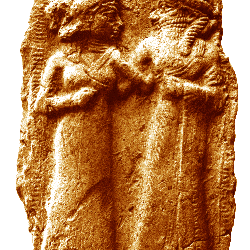
0 notes
Photo
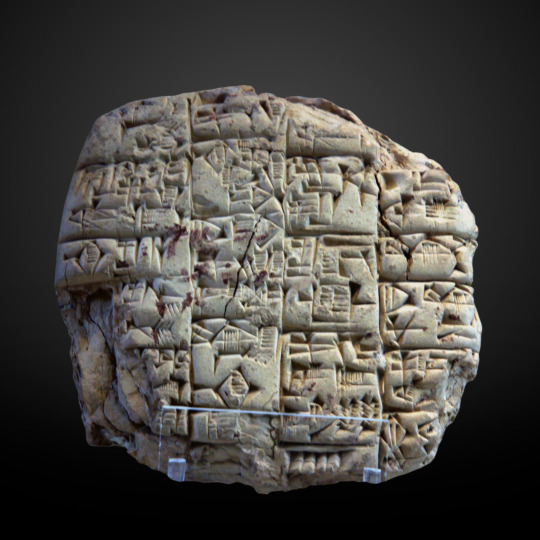
Letter from the High Priest Lu'enna to the King of Lagash (Girsu, c. 2400 BC).
In this letter, the high priest informs the king (possibly Entemena) of his son's death during a fight against sixty Elamites who had invaded and plundered the territory of Lagash. On the back is a list of the booty taken (or taken back) from Elam. This terracotta tablet is 7.8cm high, 7.8cm wide, and 2.2cm thick.
The Sumerians were the first civilization to develop the art of writing. Early pictograms conveyed basic information, such as “two sheep – five goats – Kish,” but wasn't able to give details. This system developed further, primarily in the city of Uruk, and by the Early Dynastic Period (c. 2900 BC) the system that would produce works like the Epic of Gilgamesh was firmly in place.
The Sumerian language became the lingua franca of Mesopotamia – a language adopted as a common tongue between speakers of different native languages. Although the Akkadian language replaced Sumerian at some point, the Sumerian cuneiform system was still used by other languages (including Akkadian).
Early texts have personal names in other languages, showing that other languages were still spoken at the time. Mesopotamia was never linguistically or culturally homogenous.
Sumerian writers influenced later writers, including those who wrote the books of the Bible. The Myth of Adapa was an influence on the later Garden of Eden; the Eridu Genesis has similarities to the Fall of Man, and the Atrahasis was an earlier version of the Great Flood myth.
The high priestess Enheduanna was the world's first author known by name. She composed over 40 hymns for use in temple worship – the first authored liturgy.
Mesopotamian fables were later popularized by Aesop, and the Epic of Gilgamesh inspired works like the Iliad and the Odyssey.
Sumerian influence on later civilizations was not limited to literature and writing. The concept of the gods living in the city's temple, and the shape and size of Sumerian ziggurats, may have influenced later Egyptian beliefs about their gods, and the development of the pyramid.
The Sumerian concept of time (using a base-60 system) was adopted by other civilizations. The cylinder seal, an individual's sign of personal identification, remained in use in Mesopotamia until c. 612 and the fall of the Assyrian Empire.
#history#languages#writing#architecture#poetry#religion#horology#literature#sumerian mythology#judaism#christianity#early dynastic period#akkadian period#first dynasty of lagash#mesopotamia#sumer#elam#akkadian empire#assyrian empire#lagash#girsu#uruk#iraq#entemena#enheduanna#sumerian language#akkadian language#cuneiform#sumerian cuneiform#akkadian cuneiform
275 notes
·
View notes
Text

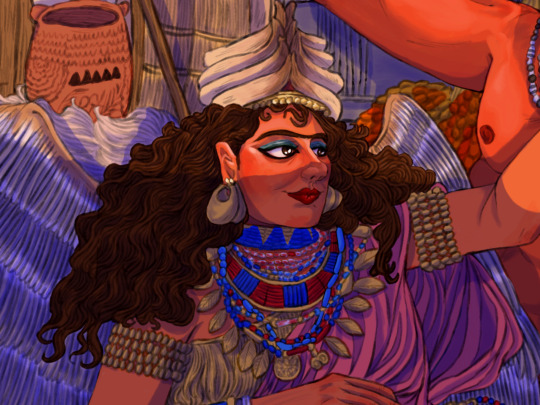
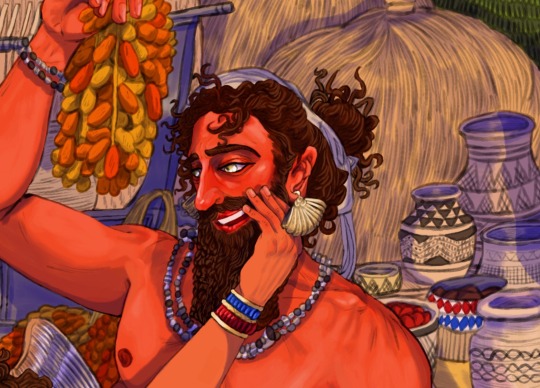


“Sunset in the marshlands of Lower Mesopotamia/ Beth Nahrain/ Bilād ar-Rāfidayn 🇮🇶🌅🌱”
[With the gods Inanna-Ishtar and Dumuzi-Tammuz, whom later reinterpreted and syncretized with an unnamed native Cypriot mother goddess by the ancient Greeks; as “Aphrodite and Adonis”.]
Thanks to one of my oomfs, @/tiziri_art on Twitter for brought up the idea of “Saharacore” and “Mesopotamian farmcore/cottagecore” through our conversation in the first place; as well as @deerheadlights and @/UmairNajeebKhan on Twitter for being inspirations for Inanna-Ishtar’s historical fashion design.
A lot of pottery objects, statuettes & the gods’ jewelries that I included here were dated from the early years of Halaf-Ubaid culture - the 3rd Dynasty of Ur. (Ranging from 6500BC - 2004BC. So I guess the gods here, also love ancient jewelries and objects as much as we do ??!)
The food that were displayed here based mostly on my understanding of the agricultural cultivation in Ancient Mesopotamia & Iraqi cuisine. Tons of grains/légumes (included wheat, barley, rice), with fruits include apples, quinces, cherries, figs, pears, apricots, plums, melons, pomegranates, citruses & palm dates. (Which is the fruit that her husband, the shepherd Dumuzi-Tammuz was associated with in the city of Lagash.)
#my art#digitlaillustration#poster illustration#farmcore#cottagecore#not really greek mythology related#ancient near east#near eastern mythology#art history#dumuzi and inanna#dumuzid#tammuz#mesopotamia#cradle of civilization#iraq#southwest asia#middle east#Bilād ar-Rāfidayn#Beth Nahrain#ancient sumeria#ancient Akkad#aphrodite#adonis#aphrodite and adonis
172 notes
·
View notes
Photo


Code of Hammurabi (replica from Pergamon Museum, original is in Louvre)
2.25 meter tall diorite stele containing 282 laws, with scaled punishments, adjusting "an eye for an eye, a tooth for a tooth"
The image on top of the stele shows king Hammurabi standing wiht raised hand (symbol of prayer) in front of Shamas, god of the Sun, but at the same time god of justice and patron of travellers.
The stele itself was not found in Babylon, but in Susa where it was taken by Elamites who conquered Babylon in 12th century BC.
It is important to mention that this is not the first written law code. It was preceeded by code Urukagina, ensi of Lagash (24th century BC), code of Ur-Nammu, founder of Ur III dynasty (2112-2004 BC) laws of Eshnuna (1930 BC) and code of Lipit-Ishtar, ruler of Isin (1870 BC). The reality is, though, that these codes were not meant to improve law practice, but more likely to show the ruler as a just and protecting figure, thus improving his own image. They usually contain standardized formulation such as freeing citizens from debts and holding patronage over widows and orphans. More on this for example in Marc Van De Mieroop 2016 A history of the ancient Near East ca. 3000-323 BC, chapter 6.2.
129 notes
·
View notes
Photo
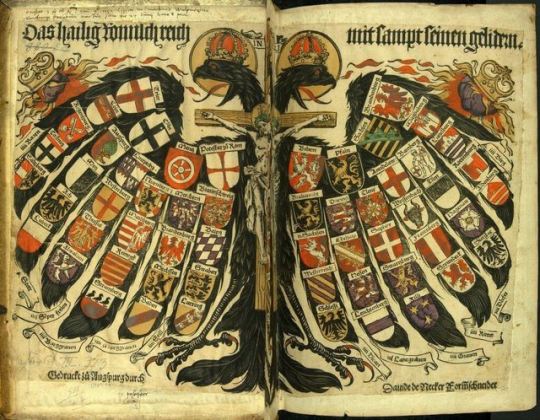





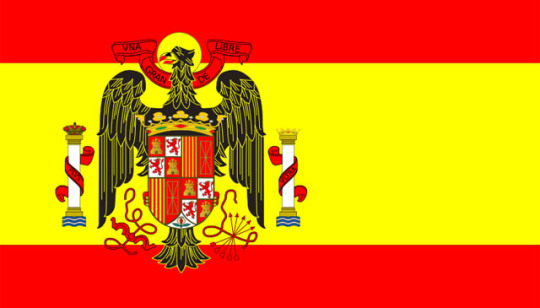



“The earliest depiction of the double-headed eagle can be found on ancient on Hittite monuments in central Anatolia. In the early 19th century, in Boğazkale, an old Hittite capital in modern-day Turkey...The double-headed eagle motif originally dates from c. 3800 BC. The Hittites had worshiped the double headed eagle as the King of Heaven, who was also called the Hittite Bird of the Sun. The bird was their symbol to signify Hittite military power.”

”The bird bird appears in Lygash under the name of Imgig, and was the Sumerian symbol for the god of Lagash, Ninurta son of Enlil...the double-headed eagle, however, is not restricted to supporting deities, and also appears supporting human figures. This is an indication of the use of the eagle as a personal (or family) symbol...The Seliuk Turks referred to it as Hamca and among the Zuni it appeared as a highly conventionalized design, but still as a double-headed thunder bird, the Sikyatki.”

”The double-headed eagle has been used as an emblem by countries, nations, and royal houses in Europe since the early medieval period. Notable examples include the Byzantine House of Palaiologos, the Holy Roman Empire, the House of Habsburg, and the Ruriks and Romanovs of Russia. The symbol often appears on countries’ coats of arms and flags. The emblem was adopted by the Russians, Poles, Serbians, Prussians, Austrians and Saxons. It was used as a private seal and as arms in Germany, Spain, France, Netherlands, England, and Russia.”
(via Mystery Of The Ancient Double-Headed Eagle Symbol | Locklip)
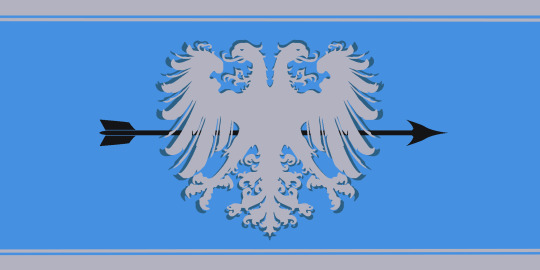
Double Headed Eagle iconology of Byzantium
“Greek scholars have tried to make links with ancient symbols: the eagle was a common design representing power in ancient city-states, while there was an implication of a "dual-eagle" concept...However, there is virtually no doubt that its origin is a blend of Roman and Eastern influences. Indeed, the early Byzantine Empire inherited the Roman eagle (extended wings, head facing right) as an imperial symbol.”

“[T]he church of Greece kept, and is to this date still using Byzantine flags with the eagle, usually black on yellow/gold background. But after the Ottoman conquest this symbol also found its way to a "new Constantinople" (or Third Rome), i.e. Moscow. Russia, deeply influenced by the Byzantine Empire, saw herself as its heir and adopted the double-headed eagle as its imperial symbol. It was also adopted by the Serbs, the Montenegrins, the Albanians and a number of Western rulers, most notably in Germany and Austria.”
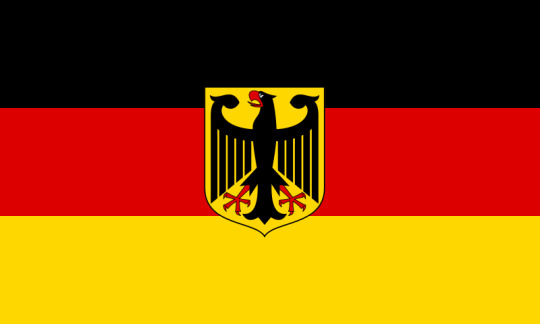
“The first mention of a double-headed eagle in the West dates from 1250 in a roll of arms of Matthew of Paris for Emperor Friedrich II. Theodore II Laskaris chose it for his symbol as Emperor (Empire of Nicaea), taking it to symbolize his state's claims to all the Byzantine Empire's former domains, both European (West) and Asian (East)... After the recapture of Constantinople and the restoration of the Byzantine Empire, the symbol was used as an emblem of the imperial family, but it is uncertain whether it was the official emblem of the Empire.”

“The double-headed eagle became the standard of the Seljuk Turks with the crowning of Toghrül (meaning "Eagle") Beg at Mosul in 1058 as "King of the East and the West" and was much used afterwards. The Sultans of Rum, Ala ad-Din Kay Qubadh I (1220-1237) and his son Kay Khusrau II (1237-1246) used the bicephalous eagle in their standards, and the motif was also found on tissues, cut stones, mural squares, and Koran holders.”
(via Double Headed Eagle iconology of Byzantium | Kythera Family blog)

The double-headed eagle of the Third Rome
“When looking carefully, you can distinguish 9 coats of arms on the eagle. However, in most cases, these shields are printed so tiny that few details can be revealed. The center shield on the eagle's chest is the one with the arms of Moscow. Then, in clockwise order starting from the heads, we see the arms of [Khanate of] Astrakhan, [Khanate of] Siberia, [Kingdoms & Principalities of] Georgia, [Grand Duchy of] Finland, [Grand Principalities of] Kiev-Vladimir-Novgorod, [Khanate of] Taurica, [Kingdom of] Poland and [Khanate of] Kazan...this double-headed eagle represents about 500 years of Russian imperial history.”
(via The double-headed eagle of the Third Rome | Franky’s Scripophily BlogSpot)
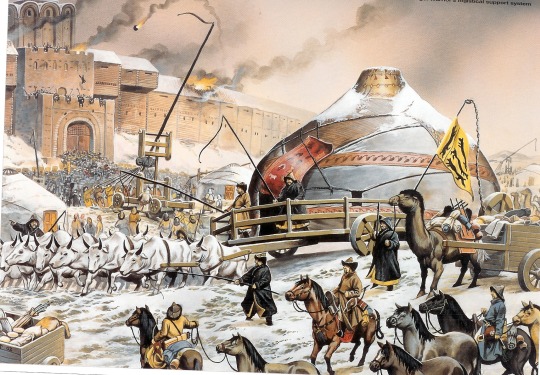
Kiev and the Byzantine Legacy in Russia
“The history of Kiev begins under the rule of the Rus. The Rus (also known as Varangians) were original Vikings who began to trade along the Volga River and later the Dnieper River. They establish several principalities centered on cities like Novgorod and later Kiev...Vladimir was also among the rulers of Kiev who gave military assistance to the Byzantines, leading to the formation of the Varangian Guard...Saint Sophia's Cathedral in Kiev, which dates to the early 11th century. It was designed rival Hagia Sophia in Constantinople, thus symbolizes Kiev as the 'new Constantinople'. There was even a Golden Gate in Kiev, named after the famous Golden Gate of Constantinople. In addition, the Kiev Monastery of the Caves date to 1051 and were influential in the spread of Orthodox thought.“
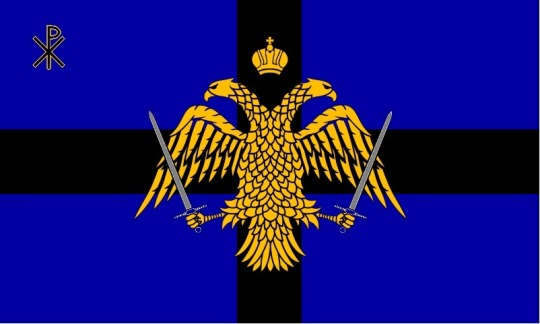
“As the Byzantine Empire was slowly dying, Moscow began to grow in power. The Metropolitan of Kiev moved to Moscow in the 14th century as the Tatars undermined the power of Kiev. Ivan III (1440-1505), the Grand Prince of Moscow, ended the dominance of the Golden Horde in Russia, and became to expand his own power. In 1472, He married Sophia Palaiologina, the niece of the last Byzantine Emperor, after the fall of Constantinople. He would then claim that Moscow was the “Third Rome” and by the end of the 16th century, the Metropolitan of Moscow claimed the title of patriarch. The title Tsar also reflects this claim to be the successor of Constantinople. In fact, the Russian Empire’s symbol was the Byzantine Double Eagle until the Soviet’s overthrew Tsar Nicholas II. This symbol has since returned after the fall of the Soviet Union.“

Mongol-Papal Encounter: Letter Exchange between Pope Innocent IV and Güyük Khan in 1245-1246
“By the late 1230s, Mongol armies had begun raiding parts of Russia and eastern Europe. Between 1236 and 1242, these military campaigns–commanded by Subutai (d. 1248), Batu Khan (d. 1255), and Berke (d. 1266), among others–had wrought major devastation across Russia, Poland, Hungary and the Balkans. The cities of Kiev, Pereyaslavl, Chernihiv, Lublin, and other major population centers in eastern and central Europe were sacked and their populations massacred.”
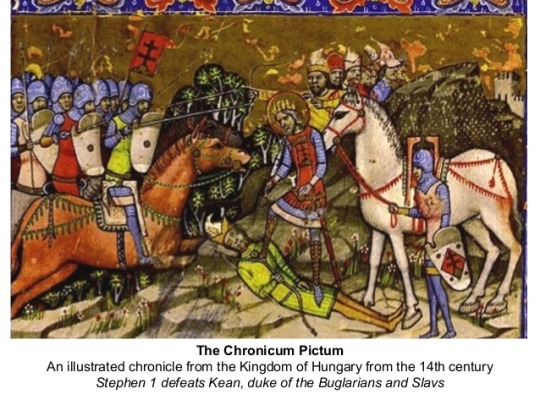
“The defeats of the Polish forces at the Battle of Liegnitz/Legnica (April 9th 1241) and the Hungarian military at the Battle of Mohi (April 11th 1241) opened up most of the Balkans and Central Europe to Mongol raids, leading to even more destruction, displacement and massacres. These alarming developments shook the foundations of Latin Christendom. Although the Mongols withdrew from most of the Balkans and east-central Europe soon after”
(via Mongol-Papal Encounter: Letter Exchange between Pope Innocent IV and Güyük Khan in 1245-1246 | Ballandalus blog)
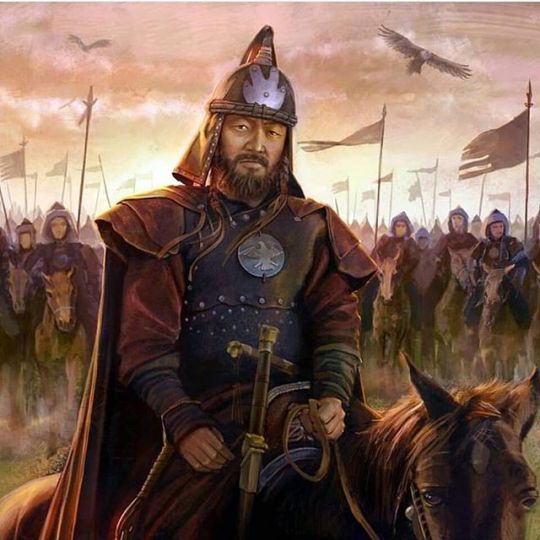
Borjigin
“A Borjigin or Borjigid is a member of the sub-clan, which started with Yesugei (but the Secret History of the Mongols makes it go back to Yesugei's ancestor Bodonchar), of the Kiyat clan. Yesugei's descendants were thus said to be Kiyat-Borjigin. The senior Borjigid provided ruling princes for Mongolia and Inner Mongolia until the 20th century. The clan formed the ruling class among the Mongols and some other peoples of Central Asia and Eastern Europe.”
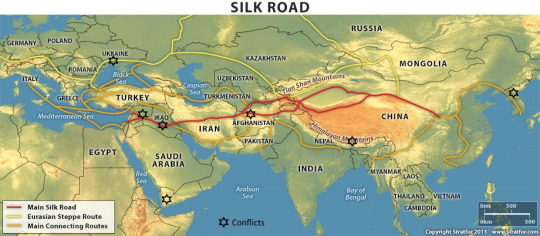
“The Borjigin family ruled over the Mongol Empire from the 13th to 14th century. The rise of Genghis (Chingis) narrowed the scope of the Borjigid-Kiyad clans sharply. This separation was emphasized by the intermarriage of Genghis's descendants with the Barlas, Baarin, Manghud and other branches of the original Borjigid.”

”In the western regions of the Empire, the Jurkin and perhaps other lineages near to Genghis's lineage used the clan name Kiyad but did not share in the privileges of the Genghisids. The Borjigit clan had once dominated large lands stretching from Java to Iran and from Indo-China to Novgorod. In 1335, with the disintegration of the Ilkhanate in Iran, the first of numerous non-Borjigid-Kiyad dynasties appeared. Established by marriage partners of Genghisids, these included the Suldus Chupanids, Jalayirids in the Middle East, the Barulas dynasties in Chagatai Khanate and India, the Manghud and Onggirat dynasties in the Golden Horde and Central Asia, and the Oirats in western Mongolia.In 1368, under Toghun Temür, the Yuan dynasty was overthrown by the Ming dynasty in China but members of the family continued to rule over Mongolia homeland into the 17th century, known as the Northern Yuan dynasty.”

“After the breakup of the Golden Horde, the Khiyat continued to rule the Crimea and Kazan until the late 18th century. They were annexed by the Russian Empire and the Chinese...The Qing dynasty respected the Borjigin family and the early emperors married the Hasarid Borjigids of the Khorchin. Even among the pro-Qing Mongols, traces of the alternative tradition survived. Aci Lomi, a banner general, wrote his History of the Borjigid Clan in 1732–35. The 18th century and 19th century Qing nobility was adorned by the descendants of the early Mongol adherents including the Borjigin.”

“Genghis Khan founded the Mongol Empire in 1206. His grandson, Kublai Khan, after defeating his younger brother Ariq Böke, founded the Yuan dynasty in China in 1271. The dynasty was overthrown by the Ming dynasty during the reign of Toghaghan-Temür in 1368, but it survived in Mongolia homeland, known as the Northern Yuan dynasty.”

Bahri dynasty
“The Bahri dynasty or Bahriyya Mamluks was a Mamluk dynasty of mostly Cuman-Kipchak Turkic origin that ruled the Egyptian Mamluk Sultanate from 1250 to 1382. They followed the Ayyubid dynasty, and were succeeded by a second Mamluk dynasty, the Burji dynasty."
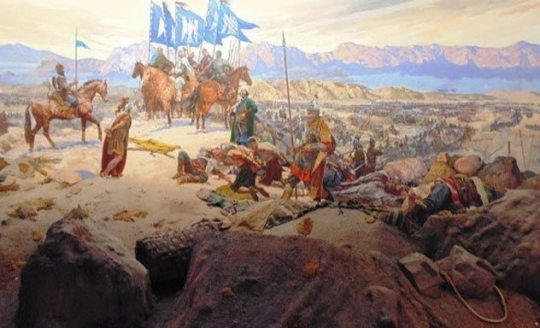

Burji dynasty
“From 1250 Egypt had been ruled by the first Mamluk dynasty, the mostly Cuman-Kipchak Turkic Bahri dynasty. In 1377 a revolt broke out in Syria which spread to Egypt...Barquq was proclaimed sultan in 1382, ending the Bahri dynasty...Permanently in power, he founded the Burji dynasty.”

House of Borghese
“Borghese is the surname of a princely family of Italian noble and papal background, originating as the Borghese or Borghesi in Siena, where they came to prominence in the 13th century holding offices under the commune. The head of the family, Marcantonio, moved to Rome in the 16th century and there, following the election (1605) of his son Camillo as Pope Paul V they rose in power and wealth. They were one of the leading families of the Black Nobilityand maintain close ties to the Vatican.”

Guelphs and Ghibellines
“The Guelphs and Ghibellines were factions supporting the Pope and the Holy Roman Emperor, respectively, in the Italian city-states of central and northern Italy. During the 12th and 13th centuries, rivalry between these two parties formed a particularly important aspect of the internal politics of medieval Italy.”

”The names were likely introduced to Italy during the reign of Frederick Barbarossa. When Frederick conducted military campaigns in Italy to expand imperial power there, his supporters became known as Ghibellines (Ghibellini). The Lombard League and its allies were defending the liberties of the urban communes against the Emperor's encroachments and became known as Guelphs (Guelfi). The Ghibellines were thus the imperial party, while the Guelphs supported the Pope. Broadly speaking, Guelphs tended to come from wealthy mercantile families, whereas Ghibellines were predominantly those whose wealth was based on agricultural estates.”
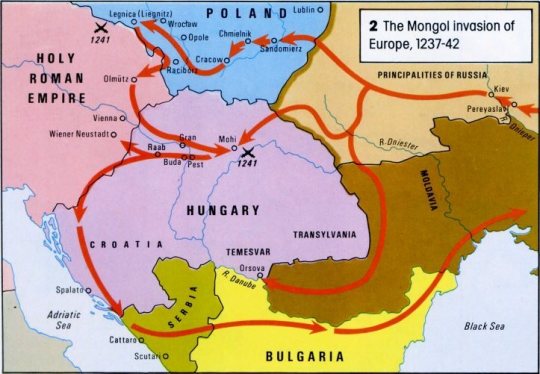
Frederick II, Holy Roman Emperor
“In 1241–1242, the forces of the Golden Horde decisively defeated the armies of Hungary and Poland and devastated their countryside and all their unfortified settlements. King Béla IV of Hungary appealed to Frederick for aid, but Frederick, being in dispute with the Hungarian king for some time (as Bela had sided with the Papacy against him) and not wanting to commit to a major military expedition so readily, refused. He was unwilling to cross into Hungary, and although he went about unifying his magnates and other monarchs to potentially face a Mongol invasion, he specifically took his vow for the defense of the empire on "this side of the Alps."

”Frederick was aware of the danger the Mongols posed, and grimly assessed the situation, but also tried to use it as leverage over the Papacy to frame himself as the protector of Christendom. While he called them traitorous pagans, Frederick expressed an admiration for Mongol military prowess after hearing of their deeds, in particular their able commanders and fierce discipline and obedience, judging the latter to be the greatest source of their success. He called a levy throughout Germany while the Mongols were busy raiding Hungary. In mid 1241 Federick dispersed his army back to their holdfasts as the Mongols preoccupied themselves with the lands east of the Danube, attempting to smash all Hungarian resistance. He subsequently ordered his vassals to strengthen their defenses, adopt a defensive posture...A chronicler reports that Frederick received a demand of submission from Batu Khan at some time.”
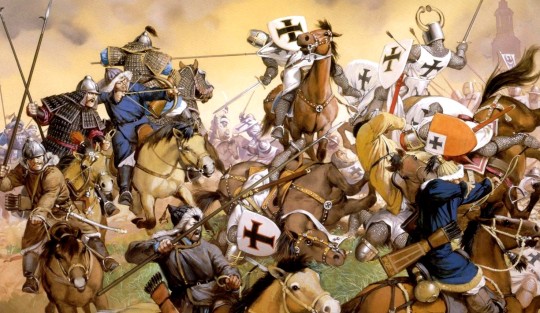
“A letter written by Emperor Frederick II, found in the Regesta Imperii, dated to June 20, 1241, and intended for all his vassals in Swabia, Austria, and Bohemia, included a number of specific military instructions. His forces were to avoid engaging the Mongols in field battles, hoard all food stocks in every fortress and stronghold, and arm all possible levies as well as the general populace.
Mongol probing attacks materialised on the Holy Roman Empire's border states...A full-scale invasion never occurred, as the Mongols spent the next year pillaging Hungary before withdrawing. After the Mongols withdrew from Hungary back to Russia, Frederick turned his attention back towards Italian matters.”

Pope Innocent IV
“In 1245, Innocent IV issued bulls and sent an envoy in the person of Giovanni da Pian del Carpine (accompanied by Benedict the Pole) to the "Emperor of the Tartars". The message asked the Mongol ruler to become a Christian and stop his aggression against Europe. The Khan Güyük replied in 1246 in a letter written in Persian that is still preserved in the Vatican Library, demanding the submission of the Pope and the other rulers of Europe...two Mongolian envoys to the Papal seat in Lyon, Aïbeg and Serkis. In the letter Guyuk demanded that the Pope appear in person at the Mongol imperial headquarters, Karakorum in order that “we might cause him to hear every command that there is of the jasaq”.
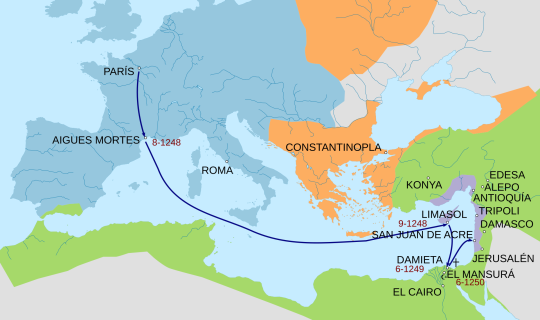
Seventh Crusade
“In 1244, the Khwarezmians, recently displaced by the advance of the Mongols, took Jerusalem on their way to ally with the Egyptian Mamluks. This returned Jerusalem to Muslim control, but the fall of Jerusalem was no longer a crucial event to European Christians, who had seen the city pass from Christian to Muslim control numerous times in the past two centuries. This time, despite calls from the Pope, there was no popular enthusiasm for a new crusade. There were also many conflicts within Europe that kept its leaders from embarking on the Crusade.”
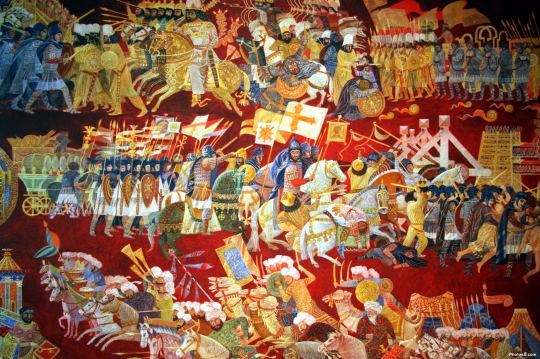
“Pope Innocent IV and Frederick II, Holy Roman Emperor continued the papal-imperial struggle. Frederick had captured and imprisoned clerics on their way to the First Council of Lyon, and in 1245 he was formally deposed by Innocent IV. Pope Gregory IX had also earlier offered King Louis' brother, count Robert of Artois, the German throne, but Louis had refused. Thus, the Holy Roman Emperor was in no position to crusade. Béla IV of Hungary was rebuilding his kingdom from the ashes after the devastating Mongol invasion of 1241.”
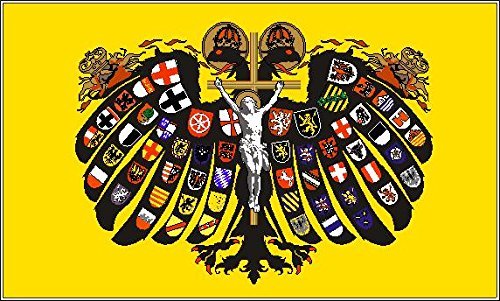
Interregnum (Holy Roman Empire)
“The term Great Interregnum is occasionally used for the period between 1250 (death of Frederick II) and 1273 (accession of Rudolf I)...After the deposition of Frederick II by Pope Innocent IV in 1245...in 1273, Rudolf I of Germany, a minor pro-Staufen count, was elected. He was the first of the Habsburgs to hold a royal title, but he was never crowned emperor. After Rudolf's death in 1291, Adolf and Albert were two further weak kings who were never crowned emperor...Sigismund (r. 1411 – 1437) was crowned emperor in 1433, but only with Frederick III (r. 1452 – 1493), the second emperor of the House of Habsburg, did the Holy Roman Emperor return to an unbroken succession of emperors (with the exception of Charles VII all of the House of Habsburg) until its dissolution in 1806.”

Franco-Mongol alliance
“European attitudes began to change in the mid-1260s, from perceiving the Mongols as enemies to be feared, to potential allies against the Muslims. The Mongols sought to capitalize on this, promising a re-conquered Jerusalem to the Europeans in return for cooperation. Attempts to cement an alliance continued through negotiations with many leaders of the Mongol Ilkhanate in Persia, from its founder Hulagu through his descendants Abaqa, Arghun, Ghazan, and Öljaitü, but without success. The Mongols invaded Syria several times between 1281 and 1312, sometimes in attempts at joint operations with the Franks, but the considerable logistical difficulties involved meant that forces would arrive months apart, never able to coordinate activities in any effective way...the Egyptian Mamluks successfully recaptured all of Palestine and Syria from the Crusaders.”
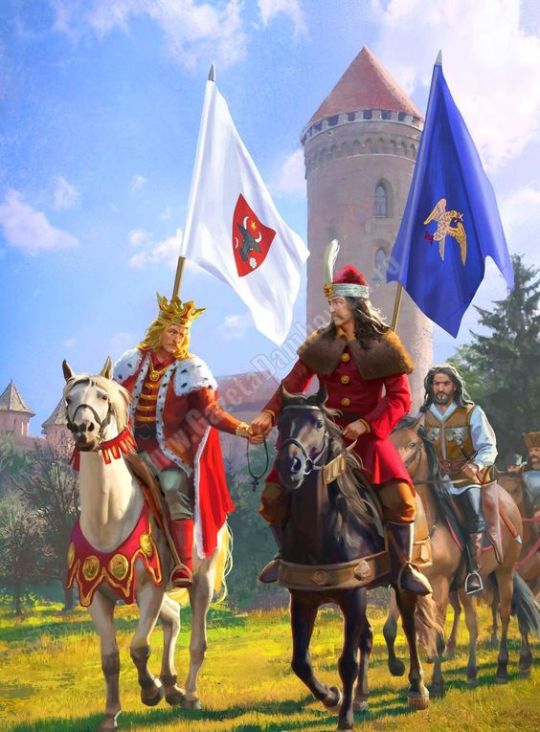
“Christian kings began to prepare for a new crusade (the Seventh Crusade), declared by Pope Innocent IV in June 1245 at the First Council of Lyon. The loss of Jerusalem caused some Europeans to look to the Mongols as potential allies of Christendom, provided the Mongols could be converted to Western Christianity. In March 1245, Pope Innocent IV had issued multiple papal bulls, some of which were sent with an envoy, the Franciscan John of Plano Carpini, to the "Emperor of the Tartars". In a letter now called the Cum non solum, Pope Innocent expressed a desire for peace, and asked the Mongol ruler to become a Christian and to stop killing Christians. However, the new Mongol Great Khan Güyük, installed at Karakorum in 1246, replied only with a demand for the submission of the pope, and a visit from the rulers of the West in homage to Mongol power:”

Hohenstaufen
“The Hohenstaufen also known as Staufer, were a dynasty of German kings (1138–1254) during the Middle Ages. Before ascending to the kingship, they were Dukes of Swabia from 1079. As kings of Germany, they had a claim to Italy, Burgundy and the Holy Roman Empire. Three members of the dynasty—Frederick I (1155), Henry VI (1191) and Frederick II (1220)—were crowned emperor. Besides Germany, they also ruled the Kingdom of Sicily (1194–1268) and the Kingdom of Jerusalem (1225–1268) [succeeded by the House of Habsburg in 1268]”
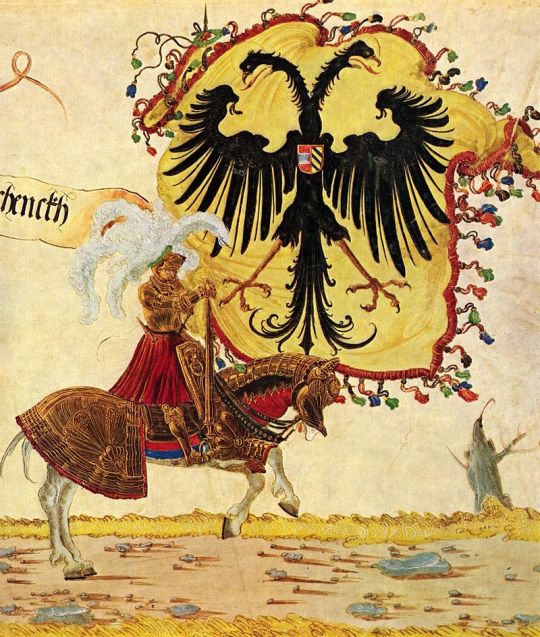
House of Habsburg
“The House of Habsburg and alternatively called the House of Austria was one of the most influential and distinguished royal houses of Europe. The throne of the Holy Roman Empire was continuously occupied by the Habsburgs from 1438 until their extinction in the male line in 1740. The house also produced emperors and kings of Bohemia, Hungary, Croatia, Galicia, Portugal and Spain with their respective colonies, as well as rulers of several principalities in the Netherlands and Italy.”

“The Habsburg Empire was never composed of a single unified and unitary state as Bourbon France, Hohenzollern Germany, or Great Britain was. It was made up of an accretion of territories that owed their historic loyalty to the head of the house of Habsburg as hereditary lord. The Habsburgs had mostly married the heiresses of these territories, most famously of Spain and the Netherlands. They used their coats of arms then as a statement of their right to rule all these territories."
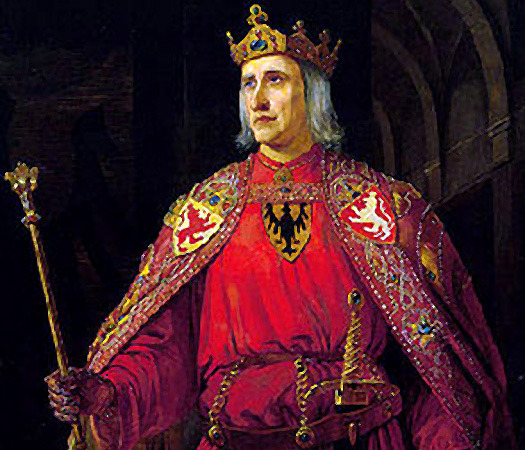
Rudolf I of Germany
“Rudolf I, also known as Rudolf of Habsburg was Count of Habsburg from about 1240 and King of Germany from 1273 until his death.Rudolf's election marked the end of the Great Interregnum in the Holy Roman Empire after the death of the Hohenstaufen emperor Frederick II in 1250.
The disorder in Germany during the interregnum after the fall of the Hohenstaufen dynasty afforded an opportunity for Count Rudolf to increase his possessions. His wife was a Hohenberg heiress; and on the death of his childless maternal uncle Count Hartmann IV of Kyburg in 1264, he also seized his valuable estates.”

Kyburg family
“Kyburg also Kiburg was a noble family of grafen (counts) in the Duchy of Swabia, a cadet line of the counts of Dillingen, who in the late 12th and early 13th century ruled the County of Kyburg, corresponding to much of what is now Northeastern Switzerland.The family was one of the four most powerful noble families in the Swiss plateau beside the House of Habsburg, House of Zähringen and the House of Savoy during 12th century. With the extinction of the Kyburg family's male line in 1264, Rudolph of Habsburg laid claim to the Kyburg lands and annexed them to the Habsburg holdings, establishing the line of "Neu-Kyburg", which was in turn extinct in 1417.”
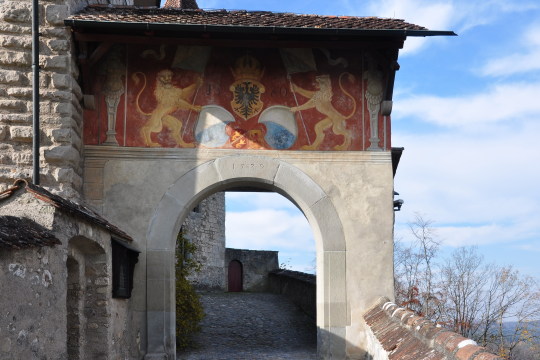
“In 1250/51 the childless Hartmann IV gave the western part of the property with the center of Burgdorf to his nephew Hartmann V. As a result, Hartmann V, who was supported by the Habsburgs, came into conflict repeatedly with the growing city-state of Bern. His uncle had to step in often to keep the peace. When Hartmann V died in 1263, Count Rudolf von Habsburg became the guardian of Hartmann's daughter Anna, and also took over the administration of the western section. In 1264, after the death of Hartman IV, Rudolf stepped in to control the eastern half as well. Though this brought him into conflict with the claims by the widow Margaret of Savoy and her family.”

”Anna, daughter of Hartmann V, married Eberhard I of Habsburg-Laufenburg. This marriage was intended to secure Habsburg interests in Aargau (Argovia) against Savoy. The son of Eberhard and Anna, Hartmann I (1275–1301) again called himself "of Kyburg". His line came to be known as that of Neu-Kyburg or Kyburg-Burgdorf, persisting until 1417.”

House of Borgia
“The House of Borgia was an Italo-Spanish noble family, which rose to prominence during the Italian Renaissance. They were from Aragon, the surname being a toponymic from the town of Borja, then in the Crown of Aragon, in Spain.The Borgias became prominent in ecclesiastical and political affairs in the 15th and 16th centuries, producing two popes: Alfons de Borja, who ruled as Pope Callixtus III during 1455–1458, and Rodrigo Lanzol Borgia, as Pope Alexander VI, during 1492–1503.”

Name of Turkey
“The English name Turkey, now applied to the modern Republic of Turkey, is historically derived (via Old French Turquie) from the Medieval Latin Turchia, Turquia. It is first recorded in Middle English (as Turkye, Torke, later Turkie, Turky), attested in Chaucer, ca. 1369. The Ottoman Empire was commonly referred to as Turkey or the Turkish Empire
The English name of Turkey (from Medieval Latin Turchia/Turquia) means "land of the Turks"...The phrase land of Torke is used in the 15th-century Digby Mysteries. Later usages can be found in the Dunbar poems, the 16th century Manipulus Vocabulorum ("Turkie, Tartaria")...The medieval Greek and Latin terms did not designate the same geographic area now known as Turkey. Instead, they were mostly synonymous with Tartary, a term including Khazaria and the other khaganates of the Central Asian steppe, until the appearance of the Seljuks and the rise of the Ottoman Empire in the 14th century...The Arabic cognate Turkiyya (Arabic: تركيا) in the form Dawla al-Turkiyya (State of the Turks) was historically used as an official name for the medieval Mamluk Sultanate which covered Egypt, Palestine, Syria, Hejaz and Cyrenaica.”

What’s the Word for Turkey in Turkish?
“The word for turkey in Turkish is hindi.What? OK, so what’s the Hindi word for turkey?Turns out that the word for turkey in Hindi is टर्की. And that, if you don’t know Devanagari, is transcribed ṭarkī in the Latin alphabet.
Turkeys are native to the Americas, but the Europeans first encountering them thought that they looked like a kind of guinea fowl, another large, ungainly, colorful-faced kind of bird. Now, guinea fowl were also called turkey fowl, but that’s because they actually had a legitimate connection to Turkey the country: Europeans received most of their guinea fowl imported via Turkey...the first turkeys brought to Europe also generally came via Turkey: The birds had originally been domesticated by the Aztecs and were brought to Europe by Spanish conquistadores, who traded them to the rest of the continent via North Africa.
Japanese and Korean call it the equivalent of “seven-faced bird,” Abkhazian and other languages in the Caucasus call it “blue bird,” and Thai and Urdu call it “elephant chicken” or “elephant trunk chicken.”

(via What’s the Word for Turkey in Turkish? | Slate)
#turkey#silkroad#chainofcommerce#noblemerchantclans#ambasadorsorspies#kiyat#borjigin#burji#borgia#borghese#kiburg#ghibelines#holyromanempire#rudolfofhapsburg#hapsburgdynasty#vladtheimpaler#transylvania#house of saxe-coburg and gotha#popeinnocentiv#guyukkhan#mongolultimatum#marriagealliance#tributetax#wagewarfortribute#secrethistoryofthemongols#doubleheadedeagle#goldenhorde#goldenorder
13 notes
·
View notes
Photo
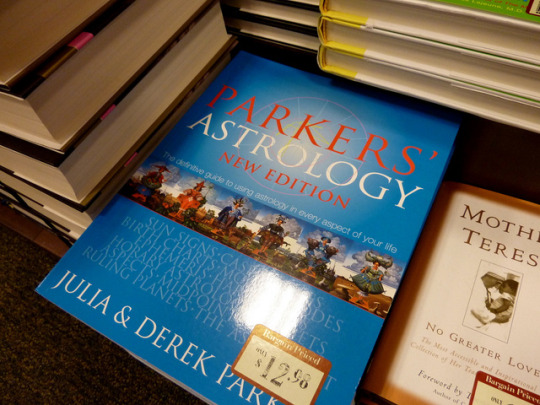
History of Astrology
“Many cultures have attached importance to astronomical events, and the Indians, Chinese, and Maya developed elaborate systems for predicting terrestrial events from celestial observations. In the West, astrology most often consists of a system of horoscopes purporting to explain aspects of a person's personality and predict future events in their life based on the positions of the sun, moon, and other celestial objects at the time of their birth. The majority of professional astrologers rely on such systems.[5]:83
Astrology has been dated to at least the 2nd millennium BCE, with roots in calendrical systems used to predict seasonal shifts and to interpret celestial cycles as signs of divine communications.[4] A form of astrology was practised in the first dynasty of Mesopotamia (1950–1651 BCE). Vedāṅga Jyotiṣa, is one of earliest known Hindu texts on astronomy and astrology (Jyotisha). The text is dated between 1400 BCE to final centuries BCE by various scholars according to astronomical and linguistic evidences. Chinese astrology was elaborated in the Zhou dynasty (1046–256 BCE). Hellenistic astrology after 332 BCE mixed Babylonian astrology with Egyptian Decanic astrology in Alexandria, creating horoscopic astrology. Alexander the Great's conquest of Asia allowed astrology to spread to Ancient Greece and Rome. In Rome, astrology was associated with 'Chaldean wisdom'. After the conquest of Alexandria in the 7th century, astrology was taken up by Islamic scholars, and Hellenistic texts were translated into Arabic and Persian. In the 12th century, Arabic texts were imported to Europe and translated into Latin. Major astronomers including Tycho Brahe, Johannes Kepler and Galileo practised as court astrologers. Astrological references appear in literature in the works of poets such as Dante Alighieri and Geoffrey Chaucer, and of playwrights such as Christopher Marlowe and William Shakespeare.
Throughout most of its history, astrology was considered a scholarly tradition. It was accepted in political and academic contexts, and was connected with other studies, such as astronomy, alchemy, meteorology, and medicine.[6] At the end of the 17th century, new scientific concepts in astronomy and physics (such as heliocentrism and Newtonian mechanics) called astrology into question. Astrology thus lost its academic and theoretical standing, and common belief in astrology has largely declined.[11]“ - wikipedia

Ancient world
“See also:Babylonian astrology
Astrology, in its broadest sense, is the search for meaning in the sky.[20]:2,3 Early evidence for humans making conscious attempts to measure, record, and predict seasonal changes by reference to astronomical cycles, appears as markings on bones and cave walls, which show that lunar cycles were being noted as early as 25,000 years ago.[21]:81ff This was a first step towards recording the Moon's influence upon tides and rivers, and towards organising a communal calendar.[21] Farmers addressed agricultural needs with increasing knowledge of the constellations that appear in the different seasons—and used the rising of particular star-groups to herald annual floods or seasonal activities.[22] By the 3rd millennium BCE, civilisations had sophisticated awareness of celestial cycles, and may have oriented temples in alignment with heliacal risings of the stars.[23]
Scattered evidence suggests that the oldest known astrological references are copies of texts made in the ancient world. The Venus tablet of Ammisaduqa is thought to be compiled in Babylon around 1700 BCE.[24] A scroll documenting an early use of electional astrology is doubtfully ascribed to the reign of the Sumerian ruler Gudea of Lagash (c. 2144 – 2124 BCE). This describes how the gods revealed to him in a dream the constellations that would be most favourable for the planned construction of a temple.[25] However, there is controversy about whether these were genuinely recorded at the time or merely ascribed to ancient rulers by posterity. The oldest undisputed evidence of the use of astrology as an integrated system of knowledge is therefore attributed to the records of the first dynasty of Mesopotamia (1950–1651 BCE). This astrology had some parallels with Hellenistic Greek (western) astrology, including the zodiac, a norming point near 9 degrees in Aries, the trine aspect, planetary exaltations, and the dodekatemoria (the twelve divisions of 30 degrees each).[26] The Babylonians viewed celestial events as possible signs rather than as causes of physical events.[26]
The system of Chinese astrology was elaborated during the Zhou dynasty (1046–256 BCE) and flourished during the Han Dynasty (2nd century BCE to 2nd century CE), during which all the familiar elements of traditional Chinese culture – the Yin-Yang philosophy, theory of the five elements, Heaven and Earth, Confucian morality – were brought together to formalise the philosophical principles of Chinese medicine and divination, astrology and alchemy.[27]:3,4
Ancient objections
Cicero stated the twins objection (that with close birth times, personal outcomes can be very different), later developed by Saint Augustine.[28] He argued that since the other planets are much more distant from the earth than the moon, they could have only very tiny influence compared to the moon's.[29] He also argued that if astrology explains everything about a person's fate, then it wrongly ignores the visible effect of inherited ability and parenting, changes in health worked by medicine, or the effects of the weather on people.[30]
Plotinus argued that since the fixed stars are much more distant than the planets, it is laughable to imagine the planets' effect on human affairs should depend on their position with respect to the zodiac. He also argues that the interpretation of the moon's conjunction with a planet as good when the moon is full, but bad when the moon is waning, is clearly wrong, as from the moon's point of view, half of its surface is always in sunlight; and from the planet's point of view, waning should be better, as then the planet sees some light from the moon, but when the moon is full to us, it is dark, and therefore bad, on the side facing the planet.[31]
Favorinus argued that it was absurd to imagine that stars and planets would affect human bodies in the same way as they affect the tides,[32] and equally absurd that small motions in the heavens cause large changes in people's fates. Sextus Empiricus argued that it was absurd to link human attributes with myths about the signs of the zodiac.[33] Carneades argued that belief in fate denies free will and morality; that people born at different times can all die in the same accident or battle; and that contrary to uniform influences from the stars, tribes and cultures are all different.[34]“ - wikipedia
#wikipedia#astrology#wicca#wisdom#witchcraft#witch#wiccan#wican#pagan#paganism#palmistry#palm reading#astronomy#relationships#love#Psychic#psychic readings#psychic readers#psychic advice#master psychic#Magic#magical#magick#magik#magi#knowledge
9 notes
·
View notes
Photo
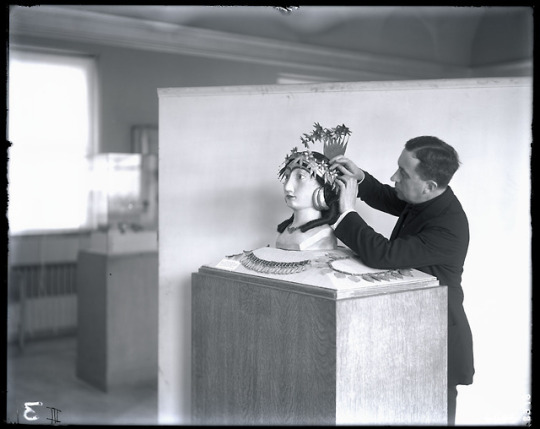

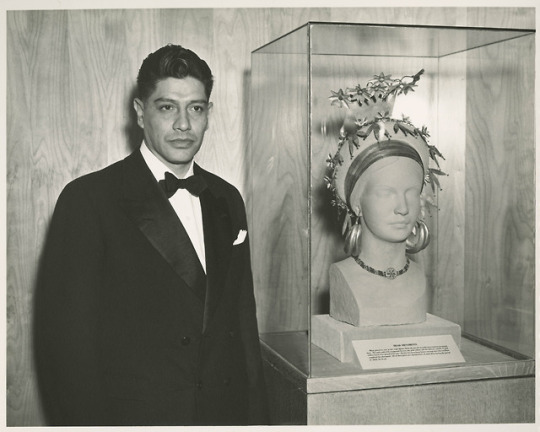


QUEEN PUABI'S HEADDRESS (2/2)
Ur, Iraq
c.2500 BCE
So many different displays, each rather telling...
“Her name and title are known from the short inscription on one of three cylinder seals found on her person. Although most women’s cylinder seals at the time would have read "wife of ___," this seal made no mention of her husband. Instead, it gave her name and title as queen. The two cuneiform signs that compose her name were initially read as "Shub-ad" in Sumerian. Today, however, we think they should be read in Akkadian as "Pu-abi" (or, more correctly, "Pu-abum," meaning "word of the Father"). Her title "eresh" (sometimes mistakenly read as "nin") means "queen."
In early Mesopotamia, women, even elite women, were generally described in relation to their husbands. For example, the inscription on the cylinder seal of the wife of the ruler of the city-state of Lagash (to the east of Ur) reads "Bara-namtara, wife of Lugal-anda, ruler of the city-state of Lagash." The fact that Puabi is identified without the mention of her husband may indicate that she was queen in her own right. If so, she probably reigned prior to the time of the First Dynasty of Ur, whose first ruler is known from the Sumerian King List as Mesannepada. Inscribed artifacts from the Seal Impression Strata (SIS) layers above the royal tombs at Ur name Mesannepada, King of Kish, an honorific used by rulers claiming control over all of southern Mesopotamia.”
https://www.penn.museum/collections/highlights/neareast/puabi.php
86 notes
·
View notes
Photo




Stela of Victory excavated in Tell Telloh, Iraq dated between 2300-2250 BCE on display at the Louvre in Paris
The archaeological site at the city of Tell Telloh in the Dhi Qar Governate was one of the first Sumerian cities to be excavated. First in the 19th Century then in the 20th Century. During the Second Dynasty of Lagash the city of Girsu, as it was known then, was the capital and religious centre of the Lagash Kingdom.
#archaeology#sumerian#iraq#military history#mesopotamia#ancient#23rd century#BCE#middle east#archer#louvre#museum#paris#barbucomedie
37 notes
·
View notes
Photo
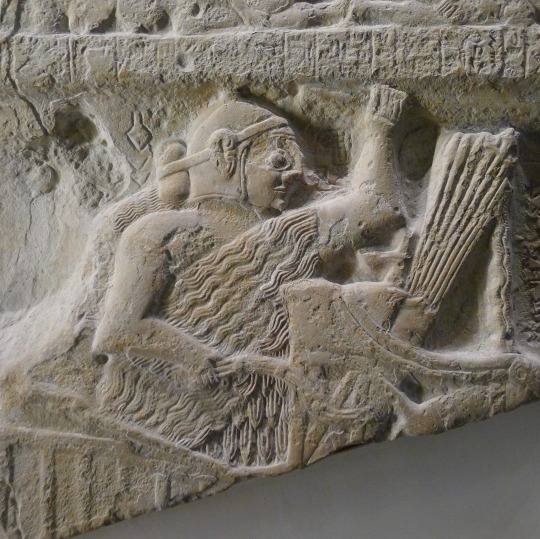
Fragment of the Stele of Vultures (c. 2450 BC), the victory stele of Eannatum of Lagash over Umma. Found in Girsu (now Tello, Iraq), made of limestone.
The Early Dynastic Period of Mesopotamia was from 2900 - 2334 BC. During this time, there was a shift from the ensi (priest-king) to a more modern-day concept of king called a Lugal (literally “big man”).
The Sumerian city-states were fighting for control of land and water rights until the First Dynasty of Lagash was established c. 2500 BC. The first king of this dynasty was Eannutum. He established one of the first verifiable empires in history, with Lagash at the centre. His empire included most of Sumer and parts of neighbouring Elam.
The last king of the First Dynasty of Lagash was Urukagina (c. 2300 BC). He was defeated by Lugal-zage-si of Umma (r. c. 2358 - 2334 BC), apparently the only king of the Third Dynasty of Uruk. Lugal-zage-si lead Umma’s final victory in the generation-long conflict with Lagash for the fertile plain of Gu-Edin. He then united Sumer as a single kingdom, but only briefly, for he in turn was defeated by Sargon of Akkad.
#history#military history#sculpture#sumerian sculpture#politics#early dynastic period (mesopotamia)#first dynasty of lagash#mesopotamia#third dynasty of uruk#sumer#lagash#umma#girsu#gu-edin#iraq#tello#eannutum#lugal-zage-si#sargon of akkad#limestone
81 notes
·
View notes
Photo

RIVAL SUMERIAN CITY STATES OF UMMA AND LAGASH
This is an excerpt from my post: THE SUMERIANS, FOREFATHERS OF CIVILIZATION IN MESOPOTAMIA.
Mesalim, King of Kish (Lugal Kishi)
“Enlil, king of all the lands, father of all the gods, by his righteous command, for Ningirsu and Shara, demarcated the (border) ground. Mesalim, king of Kish, by the command of Ishtaran, laid the measuring line upon it, and on that place he erected a stele.”
The two Sumerian cities of Umma and Lagash, like Mycenae and Troy or Athens and Sparta, were rivals for much of their existence. Border disputes were common and to settle them Mesalim, king of Kish, stepped in and attempted to end these conflicts. Umma and Lagash were more than 20 miles apart and at their center was the Guedena, a fertile field and irrigated canal that is fed by the Tigris and Euphrates Rivers; Lagash dedicated this area to their patron god Ningirsu (“lord of Girsu”; god of war, hunting, plowing, fertility, rain and irrigation). Mesalim set down a boundary stele between both cities but since Lagash also owned the city of Girsu that was located south of the Guedena they ultimately held more land than Umma. It seems like Ush, ensi of Umma, disagreed with the division of land since he removed the stele and these two armies clashed.
“Ush, ruler of Umma, something greatly beyond words he did. That stele he tore out, and into the plain of Lagash he entered.”

^ Umma in Blue, Lagash in Purple and Girsu in Green.
Umma had lost to Lagash who “cast (his) big battle-net upon it, and its many tumuli he laid upon the ground in the plain”. Lugal-sha-engur, king of Lagash, was said to have been given, by Mesalim the King of Kish, a ceremonial mace-head to place in the Temple of Ningursu in Lagash.

^ The inscription on the mace reads: “Mesilim, king of Kish, builder of the temple of Ningirsu, brought [this mace head] for Ningirsu, Lugalshaengur [being] prince of Lagash.”
This mace-head shows the design of a lion-headed eagle, symbol of Ningirsu the patron god of Lagash and Girsu. These conflicts started before this battle and would continue until long after, Umma would usually find themselves on the losing end. After battle the enemy dead would be piled up and these hills of bodies would then be covered in dirt, some of these tumuli (burial mounds) were built so high that ladders would sometimes be needed to cover them completely.
EANNATUM, ENSI OF LAGASH
‘Everybody wants to rule the world’

^ “Eannatum, ensi [of] Lagash”.
It seems as though Eannatum’s future as a warrior-king was set since birth, his name was inspired by the name of Inanna’s (goddess of war) temple, E-anna. Ultimately his name meant “Befitting the E-anna”. He also claimed that his ‘divine father’ was Ningirsu, the god of war (patron deity of Lagash).
Victory over Umma
“The ruler of Umma, where has he (ever) been appeased? With … men … he has been able to exploit the Gu'edena, the beloved field of Ningirsu. Let him be cast down!”
It is inscribed that Eannatum was visited by Ningirsu (God of War) in a dream and told him to make war on Umma.

^ The Sumerians at war by HongNian Zhang.
“Umma, like Kish, shall therefore wander about, and by means of ones seized by anger shall surely be removed. On your right side, Utu [the sun god] I shall let come forth upon you. and a … I shall let be bound upon your forehead” “him [Umma] I shall smite, and their myriad corpses I shall make stretch to the horizon.”
“They fought each other, and towards Eannatum a man shot an arrow. He was penetrated by the arrow, but he broke it off. In front of them he made screams”
“Eannatum, in Umma, like a destructive storm of rain, he left behind a deluge.”
“Umma he defeated, and twenty tumuli (burial mounds) for it he heaped up there. Eannatum, wept over with sweet tears (of joy)…”
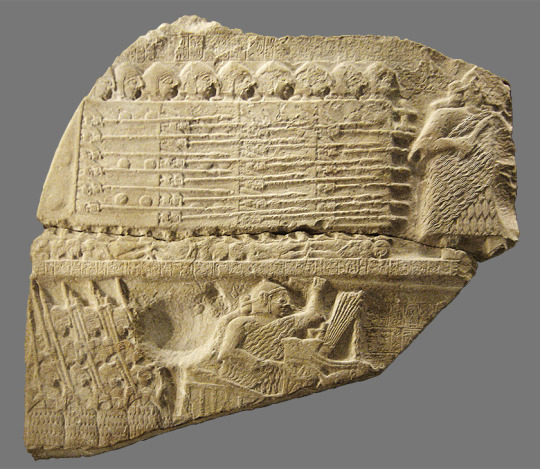
^ Vulture Stele commemorating Eannatum of Lagash’s victory over Umma.
Eannatum set a boundary stone and had Enkale (now king of Umma) swear an oath on “the great casting-net of Enlil” to pay tribute to Lagash in exchange for them maintaining the Guedena and using a portion of it. Now with their rival subdued, they were now free to redirect their military.
“By the life of Enlil, king of heaven and earth, the fields of Ningirsu I shall exploit as an interest-bearing loan. I shall operate the levees up to the spring, and forever and ever over the boundary territory of Ningirsu I shall not cross. To its levees and irrigation ditches I shall not make changes. Its steles I shall not smash to bits. On a day when I may cross over it, the great casting-net of Enlil, king of heaven and earth, by which I have sworn, upon Umma may it fall from the sky!”
Victory over Elam
To the east was a land named Elam, ethnically and linguistically different then their neighbors in Mesopotamia; the Zagros mountains marked the edge of the known world to the Sumerians and Akkadians. The rivers Karun and Karkheh sprouted out from the Zagros Mountains, feeding the landscape of the Elamites. A rich competitor that had historically made incursions into Mesopotamia and even ruled over it under the Awan Dynasty of Elam, it was an importer mostly of food and exporter of timber, horses (from the Iranian Plateau), cattle, wool, lapis lazuli, slaves, silver, gold and most importantly tin (from the Zagros mountains).

This being the Bronze Age, the use of copper weapons lessened in favor of the more durable, harder bronze which can be made from smelting copper and tin. He destroyed their capital city of Susa as well as other cities and forced them into paying him tribute.

He also took over a city state named Uru(a) which sat within the Susiana plain, a commercially significant city that not only held sway over certain passages, trade routes and choke-points but was also used by other cities for their skill in using tin to turn copper into bronze, therefore strengthening military arms and armors.
“By Eannatum, Elam, the awesome mountain range, was defeated, and its tumuli {burial mounds} he heaped up.”
“Elam and Subartu, the lands of timber and goods, he defeated.” “Susa he defeated. The Standard of Uru(a), though by its ruler, it had been set up at the head (of it), he defeated it.” – Vulture Stele.
Elam was once like Sumer and Akkad, dotted with many city-states (most notably Susa and Anshan) but under threat from their hostile western neighbors they allied to form a unified state.
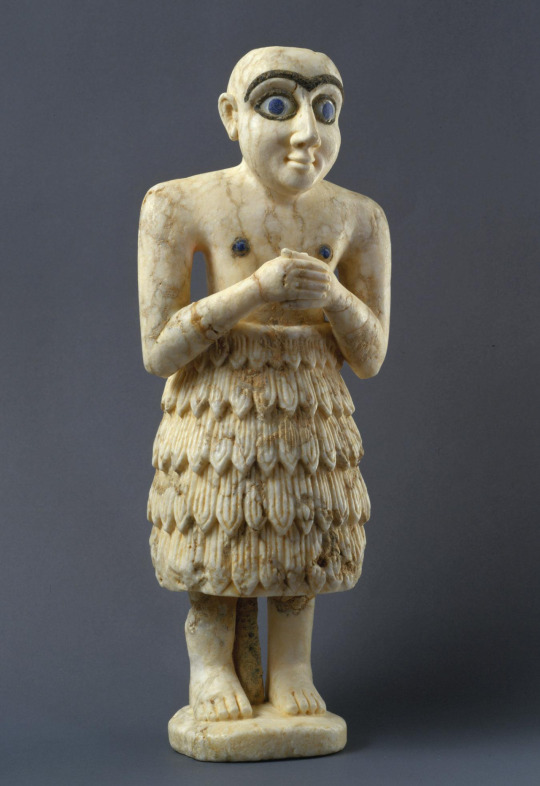
^ Votive Statue of Eannatum made of Alabaster, lapis lazuli, mother of pearl inlays, and modern bitumen inlays.
King of Kings
Now in a better financial position and militarily secure on his western and eastern flanks, he could, If he wished, continue expanding his reach. He defeated and subjugated two important Sumerian city states that lay beside the Euphrates River named Uruk and Ur.
“Uruk he defeated. Ur he defeated. Kiutu he defeated. Iriaz he destroyed, and its ruler he killed. Mishime he destroyed. Arua he obliterated. Before Eannatum, the one nominated by Ningirsu, all the lands trembled.”

^ Eannatum by Leugi, from a Civilization V mod that adds the Sumerians.
Zuzu the king of Akshak (In Sumer, near Akkadian Kish) advanced against him and once again Eannatum had proven victorious.
“In the year that the king of Akshak rose up, Eannatum, the one nominated by Ningirsu, from the Antasura of Ningirsu Zuzu, the king of Akshak, all the way back to Akshak he smote, and he obliterated it – Zuzu, along with his forces, faced Eannatum and his army and a battle commenced. Eventually, Zuzu was killed in combat and his city-state of Akshak taken”
Defeating both Kish and Mari he became the new King of Kish, still having to deal with rebelling coalitions of enemies (most involving Elam, Kish and Akshak), who he too drove back, all the while never losing a battle in his entire military career. Eannatum should not only be remembered as a skilled commander, but also for instituting the building of numerous temples, canals and cities. This is thought by some to be the world’s first empire; Eannatum conquered much of the known world and set a president for future conquerors that would reach and exceed his accomplishments. Soon after Eannatum’s death Lagash quickly crumbled as their former enemies scrambled to pick the bones off of his dying empire.
LUGALANDA, ENSI OF LAGASH
‘Face to face with the man who sold the world’
Lugalanda, ensi of Lagash, was infamous for his viciously corrupt leadership; taking ownership of the temples of Ningirsu (god of war), Bau (goddess of healing) and Shulshagana (son of Ningirsu and Bau) while placing his men (“men of the ensi [Lugalanda]”), his wife and himself in control of them. As long as they shared in their riches, all forms of government and administration freely exploited and abused their power. They began taxing the priesthood while confiscating the possessions of others (lands, livestock, fish and boats). People were forced into manual labor, temples began using sacred temple oxen to plow the fields, they charged an excessive amount for the burying of the dead, religious ceremonies and sacred rites.
In the “Liberty Cones” we read that Urukagina (also known as Uruinimgina), with the support of the common people (fishermen, shepherds, priests, farmers, etc.) seized the throne without bloodshed. He cleaned house; removing corruption and returning confiscated lands and property, set limits on temple fees, provided charity to the elderly and the poor and by amnesty “their prison he cleared out”. Seen as the earliest evidence of civil and legal reforms in history (2300′s BCE), they would not be outdone until the Code of Hammurabi (1700′s BCE).

^ Urukagina Liberty Cones.
As you will see, the pious king Urukagina of Lagash would soon become the target of Umma’s long held frustrations.
Urukagina: “For my part, what did I have of it?”. I said to him: “I did not do any violent act, but the dogs (the enemy under Lugalzagesi) today are …[damaged text] … my city”
LUGALZAGESI, ENSI OF UMMA
‘times are gone for honest men, and sometimes far too long for snakes’

After the death of Eannatum the Great hostilities had once again commenced between Lagash and Umma. Under the Uruk rulers Lugalkinishedudu and Enshakushana, there was a revival in Uruk dominance. Uruk and Ur were linked, Kish and Anshak were taken and the rulers of Uruk retained the title ‘King of Kish’. During the reign of Eannatum the Great’s nephew, Enanatum II, Lagash had declined in power and reputation; most that were once under the heel of Lagash had since rebelled and Umma began growing under the leadership of the “Man of Umma”, Lugalzagesi.
Lugalzagesi, great-grandson of Il (who took the Guedena from Lagash), was a high-priest of Nisaba (patron deity of Umma; goddess of wisdom, writing, scribes and harvest) and ensi of Umma who had also retained control over Uruk (some think through marriage, others by conquest or diplomacy) and its subject city-states. Moving his capital from Umma to Uruk, he began to be referred to as the ‘king of Uruk’, all that was left was for Lugalzagesi to take Lagash and Girsu.
After many failed attempts to defeat Urukagina of Lagash, Lugalzagesi of Umma had finally proven victorious The city was viciously sacked and destroyed as “The Man of Umma” plundered palaces, temples, daises and sacred groves; carrying off their “precious metals and lapis-lazuli”. Setting these holy places on fire and even demolishing and tipping over statues. The Sumerians were a strongly religious people and although they were not new to warfare, such sacrilegious acts against holy structures greatly offended them. A priest-scribe writes:
“The leader of Umma, having sacked Lagash, has committed a sin against Ningirsu (patron war god of Lagash). The hand which he has raised against him (Ningirsu) will be cut off!” “May Nisaba (patron deity of Umma), the god of Lugalzagesi, ruler of Umma, makes him bear the sin!”

^ Umma attacks Lagash.
Now having subjugated all of Sumer he would then aim his focus northward and conquer the lands of Akkad.
“king of all the lands, to Lugalzagesi the kingship of the nation had given, and the eyes of the nation he had let be directed toward him, and all the lands at his feet he had placed, and from east to west he had made them subject to him, from the Lower Sea [Persian Gulf], along the Tigris and Euphrates [rivers] to the Upper [Mediterranean] Sea”.
While Eannatum the Great had also conquered many of these lands, according to the texts it was Lugalzagesi’s empire that was truly united and happy during his reign. However this is usually seen as propaganda spread by Lugalzagesi, and the far reaching extent of his conquests are often questioned.
“In those days, Uruk in rejoicing spent its days under him. Ur, like a bull, its head skyward did lift up under him.”
“All the lands in river meadows rested (contentedly) under him, and the nation was happily making merry under him.”
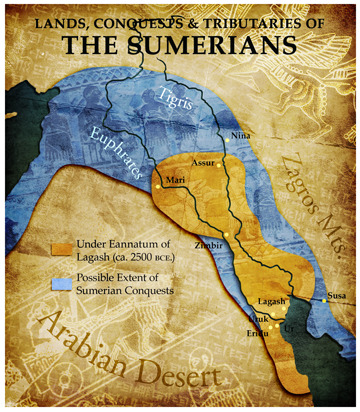
^ Civilization V mod that adds the Sumerians .
Soon another force would rise which would exceed the successes of both Eannatum and Lugalzagesi, one who would conquer and unite much of the known world, Sargon the Great of Akkad.
If there are any errors please privately inbox me so I can update it. As always, if you’d like to read or learn about any specific historical subjects just let me know what they are and I will take note of them.
See Also:
For information on one of the earliest recorded civilizations on earth, the Mesopotamian flood myth, the evolution into city-states and their rivalrous history - read: THE SUMERIANS, FOREFATHERS OF CIVILIZATION IN MESOPOTAMIA.
For information on Sargon the Great and his Akkadian Empire, the revival of the Sumerian Empire, the Gutian and Amorite invasions as well as the Sumer-Akkadian military - read: THE AKKADIANS AND THE SUMERIAN RENAISSANCE, BRONZE AGE TITANS OF MESOPOTAMIA.
125 notes
·
View notes
Text
A brief history of graphic design
Graphic design is so much a part of our modern world that it is hard to imagine living without it. And in some ways, we never have: visual communication is about as old as our opposable thumbs, though it’s been a long journey from stone tools to digital tablets. In short, the history of graphic design is a story that spans the entirety of human existence and it has the power to inspire and inform even modern graphic designers.
For one thing, knowing where, why and how this industry came about helps designers understand their place alongside history. In more practical terms, stylistic trends are cyclical, and studying the past can inspire some innovative ideas in the present. So join us as we trace the roots of design from pre-industrial history into the industry we know today. With any luck, you might just leave your own footprint along the way!
3D caveman character by Emanuel Barros
Before the Printing Press: Prehistory to the Renaissance
Cave paintings
Sumerian written language
Chinese printing
Medieval calligraphy
European heraldry
Storefronts
The birth of graphic design: Renaissance and Industrial Era
Gutenberg press
First logos
First Print Advertisements
Chromolithography
Graphic design in the modern era
The Wiener Werkstätte
Paul Rand
A glimpse into the digital era
The history of graphic design is ongoing
Before the printing press: Prehistory to the Renaissance
—
Graphic design proper really began after the invention of the printing press in 1440, but the roots of visual communication stretch all the way back to caveman times. In this section, we’ll run down the events of early history that paved the way for graphic design centuries before the world was ready for it.
Cave paintings ~38,000 BCE
It seems like humans have always had an inherent drive towards art, evidenced by the early cave paintings dating back to prehistoric times. Subjects vary from animals to hand imprints to events like hunting, and they’ve been found all over the world (Australia, Spain, Indonesia, France, Argentina, just to name a few). Historians debate the fine details as to who these were meant to communicate with (whether each other or their gods), but one thing that’s clear is, right from the start, humanity displayed a knack for communicating with visuals.
Cueva de las Manos in Perito Moreno, Argentina. Via Wikipedia
Sumerian written language – 3300 – 3000 BCE
An ancient Sumerian tablet bearing sad news: a letter written to the king of Lagash informing him of his son’s death in battle.
As you read this article, interpreting all these tiny, abstract marks of the Latin Alphabet into words and sentences, it’s easy to forget that alphabets are a man-made invention. As far as we know, the Sumerians created one of the first written languages, most likely as a means of recording trader inventories to ensure couriers didn’t steal anything on deliveries.
These earliest languages were logographic—icons represented entire words instead of phonetic sounds. This suggests a natural ability of humans to use visual representation to communicate complex ideas, a cornerstone of modern graphic design. And in the last few millennia, not much has changed: designers still rely on icons like hamburger menus or magnifying glasses to represent entire words and concepts in limited space.
Advancements in Chinese printing 200 CE – 1040 CE
A woodblock print of a Chinese play from the Yuan dynasty.
China holds most of the records for printing discoveries, including non-papyrus paper making, woodblock printing, and movable type—all of which occurred earlier than you might have guessed.
As far back as 200 CE, China used wood reliefs to print and stamp designs on silk clothes, and later paper. In 1040, Bi Sheng invented the world’s first movable type printing press out of porcelain, more than 400 years before Gutenburg brought a similar technology to Europe.
Medieval calligraphy – 700s
In the Middle Ages, typography started to take off as humanity started expanding its aesthetic horizons into the letters and words themselves. Because texts in this period were produced and replicated by hand, a little artistry made the books more valuable and set certain scholars apart from others. In Islamic cultures, typography was doubly important because figurative art was seen as sacrilegious, meaning typography was one of only a few permissible ways of artistic expression.
Famous sixteenth-century Persian calligrapher Mir Emad Hassani, demonstrating the Nasta’liq style.
15th century German coats-of-arms. Via Wikipedia
European heraldry – ~1100
Technically, the world’s first logo is the coat of arms, used as a symbol to represent family houses or territories. Scholars theorize the practice was popularized during the Crusades, where intermingling soldiers from different countries and houses incentivized a means to tell everyone apart, particularly on armor and battle flags.
Like logos, a house’s coat of arms aimed to represent the values, characteristics and styles of the people. Later, these emblems took on more practical purposes, such as wax seals to reflect authenticity.
Storefront signage – 1389
Sign outside the Green Dragon pub. Via Pinterest
In the 14th century, beer and ale were viable if not preferable alternatives for drinking water at a time when most water sources were polluted. King Richard II of England made a law that ale houses must have signs out front so the public could find them easier.
Not only were these the first signage that actually represented companies rather than houses, but they’re also the origin of a beautiful tradition that survives to this day.
The birth of graphic design: Renaissance and Industrial Era
—
With the advent of the printing press in Europe, humanity was able to recreate text, art and design on a massive scale, and for relatively cheap. The ancestors of modern companies—also on the rise—soon took notice of how such visuals could affect shopping behaviors and increase profits, thus modern graphic design was born.
The early printing process circa 1568. Via Wikipedia
Invention of the Gutenberg press – 1439
Johannes Gutenberg brought moveable type to Europe in 1439, introducing mass communication to Western culture and forever changing civilization. With the Gutenberg press, people no longer had to rely on lengthy scholarly reproductions of books, opening up literature (and literacy) to the masses and making it affordable. The Gutenberg press paved the way for more commercial uses of design, which ushered in the era of graphic design as we know it.
Printers’ marks from the 15th century. Via Smashing Magazine
First logos – late 1400s
It was the printing industry that first used logos, although they were limited to just marks on their own documents. It wasn’t just a branding device, but also a means to show off your printing skill—how well your logo was printed reflected how well everything was printed.
One of the earliest known print advertisements Via the Brent Museum and Archive
First print advertisements – 1620s
The printing press gave way to the “coranto,” the precursor to the newspaper. And in the early 1600s, these corantos featured the first printed advertisements.
(To be fair, written advertisements date back to ancient Egypt, but this is the first time we see images in mass-produced ads.)
Chromolithography – 1837
Early advertising isn’t known for its subtlety.
Technological advancements continued to fuel the progression of graphic design, such as the ability to print in color, or chromolithography. While used primarily for recreating paintings for home decor, chromolithography also opened new doors for advertising.
An early Dr. Pepper chromolithograph ad. Via Tim Broadwater
Brands were now able to use a lot of the familiar marketing tools we know today, such as characteristic color schemes and building emotional connections through slice-of-life scenes. Before, visuals were stilted by the tech of the time (see the ink blot coranto image in the previous section) and prioritized basic clarity instead of touching on complex emotions. But chromolithography enabled some degree of realism, allowing advertising to capitalize on attractive models, fashions of the day and artistic usage of colors.
Graphic design in the modern era
—
Graphic design as we know it today really started developing in the modern era, roughly the late 1800s up until the end of World War II. While the 19th century was more about technological advancements and new capabilities, the modern era was about learning how to exploit these advancements for more artistic aims. With printing now a common tech and competition fueling innovation, artists and designers were pushed to explore new styles and techniques, which quickly trickled into advertising and branding.
The Wiener Werkstätte (first graphic design agency) – 1903
With more and more companies recognizing the benefit of graphic design, it was just a matter of time before the first graphic design agency emerged. That honor belongs to Austria’s Wiener Werkstätte, an organization who made contributions to design style and business alike.
Left to right: Werkstätte monogram, rose logo and the Galerie Miethke logo. Via Smashing Magazine
Meaning simply “Vienna workshop,” the Wiener Werkstätte was the first such organization of visual artists, including painters, architects, and early graphic designers. Organizationally, it set the precedent for all other collaborative agencies to follow.
Perhaps its greatest legacy was stylistic innovation, such as cubism. And as a group of professional artists working together, they held great influence over establishing design standards for upcoming generations of artists, particular those after World War I when cultural attitudes were changing worldwide. The work done at the Wiener Werkstätte set the stage for the popular Bauhaus and Art Deco styles that soon followed.
Staatliches Bauhaus founded – 1919
Part of the “See America” series of tourism posters in the 1930s by Alexander Dux. Via National Geographic
Furthering what the Wiener Werkstätte started, the Staatliches Bauhaus, or just simply “Bauhaus,” first opened its doors in Weimar, Germany in 1919. Theirs was an ambitious goal: to create a Gesamtkunstwerk, an artistic ideal that encompasses or synthesizes existing art forms into one perfect work. The interesting thing is they actually succeeded: Bauhaus was one of the central driving forces behind the popularization of the modernist style.
The term “graphic design” appears for the first time – 1922
William Addison Dwiggins. Via Wikipedia
In his article “New Kind of Printing Calls for New Design” (printed in the Boston Evening Transcript, August 29, 1922), book designer William Addison Dwiggins first used the term “graphic design” to describe exactly what his role was in structuring and managing the visuals in book design. From day one, designers were struggling to explain to non-designers what, exactly, they did.
Paul Rand publishes Thoughts on Design – 1947
With one foot in modernism and the other in post-modernism, legendary designer Paul Rand helped lead graphic design into its current form. He posted his theories and ideologies in the seminal work Thoughts on Design, which largely shaped the future of the entire graphic design industry.
One of the top designers in history, Paul Rand left his mark on the logos of many everyday brands. Via the Brandthropologist
His book candidly explains his design philosophies he used throughout the latter half of the twentieth century, namely a call for “functional-aesthetic perfection,” an ideal balance between a logo looking good and communicating its points effectively, seen in his popular logo designs for brands like Ford, Westinghouse, Yale, ABC, UPS, and IBM.
A glimpse into the digital era
—
From the 1950s onward, the world began its slow approach to the digital era we’re currently enjoying. The mass-adoption of home computers is a technological advancement comparable to the invention of the printing press, ushering in a new age for mass communication and granting access to esoteric art styles and digital software for new methods of creating art.
MTV’s usage of logos.
Adobe Photoshop—first released in 1990—even on its own changed the face of graphic design. Photo manipulation created a whole new subcategory of graphic design, blending together elements of photography, illustration, and CGI (it would have made the Gesamtkunstwerk artists proud).
Simultaneously, the nature of branding also evolved to meet the changing times. We partially have MTV to thank for this—they brought a fresh new take on logo usage, particularly in constantly changing theirs while retaining recognizable characteristics.
A perfect example of modern flat design. By KR Designs
When the internet came into prominence around the turn of the century, designers took a page out of MTV’s book and adopted youthful and at times edgy designs to draw the younger generation into the world wide web. This can be seen in online trends like flat design, which incorporates bright colors and cartoonish figures.
Graphic design trends are cyclical, as the new-meets-old logo for Carretto Gelato. By ssnastasia
The history of graphic design is ongoing
—
That pretty much brings us up to date with graphic design, but one area still remains a mystery: what is the future of graphic design?
The progression of visual communication from cave paintings to digital software can serve as great inspiration, but what fruit that bears is up to you, whether you’re the next generation of designer or the client whose brand might lend itself to a new leap in design thinking. Though today the process is hard work, tough feedback, countless late nights in front of a glowing screen, the result might just bring about the Bauhaus or Thoughts on Design of tomorrow…
Want to explore amazing designs and designers?
Browse a wide range of amazing designer portfolios and find the right one for your next project.
Let’s go!
The post A brief history of graphic design appeared first on 99designs.
A brief history of graphic design published first on https://www.lilpackaging.com/
1 note
·
View note
Text
Prayer to Nanše

nanše nin uru nin me kal-kal-la
nin en-lil-gin nam tar-tar-re
nanše-ĝu dug-ga-zu zid-dam
saĝ-bi-še e-a-am
ensi diĝir-re-ne-me
nin kur-kur-ra-me ama inim-ĝu ud-da ma-mu-da
Nanše, mighty lady, lady of most precious powers,
lady who like Enlil determine fates,
my Nanše, what you say is trustworthy and takes precedence.
You are the interpreter of dreams among the gods,
you are the lady of all the lands. Mother, my matter today is a dream
This is a prayer to goddess Nanše from Gudea’s Cylinder in which he asked the goddess to interpret his dream about building the temple of Ningirsu.
Plaque above, showing praying worshipers, was commissioned by Ur-Nanshe, the first ruler of the First Dynasty of Lagash (around 2500 BC), who built the temple in Sirara, the very same temple in which Gudea offered the prayer above. It is clear that Nanše was important goddess to rulers of Lagash since ancient times reaching major prominence during times of Gudea.
Note: determinatives and sign numbers were omitted for formating reasons
38 notes
·
View notes
Text
Korean Poetry Yun Dong-ju 윤동주 "The Heavens and the Wind and the Stars and Poetry" on Sumerian creation myth Anu An ancient Mesopotamian god of the sky and NASA Studies an Unusual Arctic Warming Event on Lurianic Kabbalah Shevira – Shattering of the sephirot vessels, Tikun – Rectification and The Guardianship of the Islamic Jurist Vilayat-e Faqih Wilayat al-Faqih, al-omour al-hesbiah and Waqf and Les XX and Conservatoire de Paris Vincent D'indy (1851-1931) Diptyque mediterraneen, Op. 87
Korean #Poetry Yun Dong-ju 윤동주 "The Heavens and the Wind and the Stars and Poetry" on Sumerian creation myth Anu An ancient Mesopotamian god of the sky and NASA Studies an Unusual Arctic Warming Event on Lurianic Kabbalah Shevira – Shattering of the sephirot vessels, Tikun – Rectification and The Guardianship of the Islamic Jurist Vilayat-e Faqih Wilayat al-Faqih, al-omour al-hesbiah and Waqf and #LesXX and Conservatoire de Paris Vincent D'indy (1851-1931) Diptyque mediterraneen, Op. 87
https://www.facebook.com/juhyung.han.5/posts/1721251961267304
http://blog.naver.com/artnouveau19/221223702329
Yun Dong-ju
Yun Dong-ju or Yoon Dong-joo (윤동주, Korean pronunciation: [jundoŋdʑu]; December 30, 1917 – February 16, 1945) was a Korean poet.[1] Known for his lyric poetry as well as resistance poetry, he was born in Longjing, Jilin, China.
His poetry was finally published in 1948, when three collections of handwritten manuscripts were published posthumously as "The Heavens and the Wind and the Stars and Poetry" (Haneulgwa Baramgwa Byeolgwa Si). With the appearance of this volume Yun came into the spotlight as a Resistance poet of the late occupation period.
https://en.wikipedia.org/wiki/Yun_Dong-ju
Counting The Stars At Night
Up where the seasons pass,
the sky is filled with autumn.
In this untroubled quietude
I could almost count these autumn-couched stars.
But why I cannot now enumerate
those one or two stars in my breast
is because the dawn is breaking soon,
and I have tomorrow night in store,
and because my youth is not yet done.
Memory for one star,
love for another star,
sorrow for another star,
longing for another star,
poetry for another star,
and oh! mother for another star.
Mother! I try to call each star by some such evocative word, names of school children with whom I shared desks, names of alien girls like Pai, Kyunh, Ok, names of maidens who have already become mothers, names of neighbors who lived in poverty, names of birds and beasts like pigeon, puppy, rabbit, donkey, deer,and names of poets like Francis, Jammes and Reiner Maria Rilke.
They are as far away
and intangible as the stars.
Mother!
You too are in the distant land of the Manchus.
Because I have a secret yearning,
seated on this star-showered bank,
I have written my name thereon
and covered it with earth.
In truth, it is because the insects chirp
all night to grieve over my bashful name.
But spring shall come to my stars after winter's delay,
greening the turf over the graves,
so this bank that buries my name
shall proudly wear the grass again.
https://allpoetry.com/Counting-The-Stars-At-Night
Sumerian creation myth
The earliest record of the Sumerian creation myth, called The Eridu Genesis by historian Thorkild Jacobsen,[1] is found on a single fragmentary tablet excavated in Nippur. It is written in the Sumerian language and dated to around 1600 BC.[1] Other Sumerian creation myths from around this date are called the Barton Cylinder, the Debate between sheep and grain and the Debate between Winter and Summer, also found at Nippur.
https://en.wikipedia.org/wiki/Sumerian_creation_myth
The Heaven
Anu (Akkadian: 𒀭𒀭 DAN, Anu‹m›) or An (Sumerian: 𒀭 AN, from 𒀭 an "sky, heaven")[1] was the ancient Mesopotamian god of the sky.
https://en.wikipedia.org/wiki/Anu
The Wind
Enlil (Sumerian: 𒀭𒂗𒆤 dEN.LÍL, "Lord Storm")[1][2] was the ancient Mesopotamian god of wind, air, earth, and storms
https://en.wikipedia.org/wiki/Enlil
The Stars
mul [SHINE] (129x: ED IIIb, Lagash II, Ur III, Old Babylonian) wr. mul; mul2; mul4 "star; to shine, radiate (light); arrow; to radiate (branches)" Akk. kakkabu; mulmullu; nabāţu
mulan [STAR] (33x: Old Babylonian) wr. mul-an "heavenly star”
Poetry
Nidaba or Nisaba (Sumerian: 𒀭𒉀 DNAGA; later 𒀭𒊺𒉀 DŠE.NAGA),[1] also known by the epithet Nanibgal (Sumerian: 𒀭𒀭𒉀 DAN.NAGA; later 𒀭𒀭𒊺𒉀DAN.ŠE.NAGA)[1] was the Sumerian goddess of writing, learning, and the harvest. Her sanctuaries were E-zagin at Eresh and at Umma.
https://en.wikipedia.org/wiki/Nidaba
The Wind
In Sumerian religion, Ninlil (𒀭𒊩𒌆𒆤 DNIN.LÍL"lady of the open field" or "Lady of the Wind"), also called Sud, in Assyrian called Mulliltu, is the consort goddess of Enlil. Her parentage is variously described. Most commonly she is called the daughter of Haia (god of stores) and Nunbarsegunu (or Ninshebargunnu [a goddess of barley] or Nisaba). Another Akkadian source says she is the daughter of Anu (a.k.a. An) and Antu (Sumerian Ki). Other sources call her a daughter of Anu and Nammu.
https://en.wikipedia.org/wiki/Ninlil
Poetry
In Mesopotamian religion, Ninurta (Sumerian: 𒀭𒊩𒌆𒅁 DNIN.URTA, lord of barley) was a god of law, scribes, farming, and hunting. In Lagash he was identified with the city god Ningirsu (𒀭𒊩𒌆𒄈𒋢 DNIN.ĜIR2.SU). In the early days of Assyriology, the name was often transliterated Ninib or Ninip and he was sometimes analyzed as a solar deity.
https://en.wikipedia.org/wiki/Ninurta
Poetry
Nintinugga was a Babylonian goddess of healing, the consort of Ninurta. She is identical with the goddess of Akkadian mythology, known as Bau (cuneiform: 𒀭𒁀𒌑 Dba-u2), Baba though it would seem that the two were originally independent. Later as Gula and in medical incantations, Bēlet or Balāti, also as the Azugallatu the "great healer",same as her son Damu. Other names borne by this goddess are Nin-Karrak, Nin Ezen, Ga-tum-dug and Nm-din-dug. Her epithets are "great healer of the land" and "great healer of the black-headed ones", a "herb grower", "the lady who makes the broken up whole again", and "creates life in the land", making her a vegetation/fertility goddess endowed with regenerative power.[1] She was the daughter of An and a wife of Ninurta. She had seven daughters, including Hegir-Nuna (Gangir).
https://en.wikipedia.org/wiki/Nintinugga
Poetry
Uttu was the ancient Sumerian goddess of weaving.[1] The same cuneiform symbol used to write her name was also used to write the Sumerian word for "spider",[1] indicating that Uttu was probably envisioned as a spider spinning a web.[1] She appears primarily in the myth of Enki and Ninsikila, in which she resists the sexual advances of her father Enki by ensconcing herself inside her web, but he convinces her to let him in using a gift of fresh produce and the promise that he will marry her. Enki then intoxicates her with beer and rapes her. She is rescued by Enki's wife Ninhursag, who removes Enki's semen from her vagina and plants it in the ground, resulting in the growth of eight new plants, which Enki later eats.
https://en.wikipedia.org/wiki/Uttu
The Stars
Dumuzid[a] later known by the corrupted name Tammuz,[b] was the ancient Mesopotamian god of shepherds, who was also the primary consort of the goddess Inanna (later known as Ishtar). In Sumerian mythology, Dumuzid's sister was Geshtinanna, the goddess of vegetation. In the Sumerian King List, Dumuzid is listed as an antediluvian king of the city of Bad-tibira and also an early king of the city of Uruk. In the Sumerian poem Inanna Prefers the Farmer, Dumuzid competes against the farmer Enkimdu for Inanna's hand in marriage. In Inanna's Descent into the Underworld, Dumuzid fails to mourn Inanna's death and, when she returns from the Underworld, she allows the galla demons to drag him down to the Underworld as her replacement. Inanna later regrets this decision and decrees that Dumuzid will spend half the year in the Underworld, but the other half of the year with her, while his sister Geshtinanna stays in the Underworld in his place, thus resulting in the cycle of the seasons.
https://en.wikipedia.org/wiki/Dumuzid
"The Heavens and the Wind and 'the Stars' and Poetry"
Mesh-ki-ang-gasher (Mèš-ki-áĝ-ga-še-er, Meš-ki-aĝ-gašer; also transliterated Mes-Kiag-Gasher, Mesh-Ki-Ang-Gasher, Meskiagkasher, Meckiagkacer and variants) was a Sumerian ruler and the founder of the First Dynasty of Uruk and the father of Enmerkar, according to the Sumerian king list. If a historical ruler, he would have flourished in ca. the 28th century BC (Early Bronze Age II).
"In E-ana, Meš-ki-aĝ-gašer, the son of Utu, became en and lugal; he ruled for 324 [variants: 325] years. Meš-ki-aĝ-gašer entered the sea and disappeared. Enmerkar, the son of Meš-ki-aĝ-gašer, the king of Unug, who built Unug [variants: under whom Unug was built], became king; he ruled for 420 years. "[1]
E-ana ("house of heaven") was the name of the temple to Inanna at Uruk. The entry thus has Mesh-ki-ang-gasher ruling the fortress or castle around which his son would build the city of Uruk, and which was to become the main temple to its patron goddess.
Unlike his successors Enmerkar, Lugalbanda, Dumuzid, the Fisherman and Gilgamesh, Mesh-ki-ang-gasher is not known from Sumerian epics or legends besides the King List. His nature as the son of the sun god, the founder of a major dynasty and his mysterious "disappearance" in the sea give him a mostly mythological flavour. His son Enmerkar is also called "son of Utu" in the Sumerian legend Enmerkar and the Lord of Aratta — where, aside from founding Uruk, Enmerkar is credited with building a temple at Eridu and with the invention of writing.
In David Rohl's system of identifications of Bronze Age individuals with characters in the Hebrew Bible, Mesh-ki-ang-gasher corresponds to Cush.
https://en.wikipedia.org/wiki/Mesh-ki-ang-gasher
Mesh and Kantian categories
In Kant's philosophy, a category (German: Categorie in the original or Kategorie in modern German) is a pure concept of the understanding (Verstand). A Kantian category is a characteristic of the appearance of any object in general, before it has been experienced. Kant wrote that "They are concepts of an object in general…."[1] Kant also wrote that, "…pure cоncepts [Categories] of the undеrstanding which apply to objects of intuition in general…."[2] Such a category is not a classificatory division, as the word is commonly used. It is, instead, the condition of the possibility of objects in general,[3] that is, objects as such, any and all objects, not specific objects in particular.
https://en.wikipedia.org/wiki/Category_(Kant)
É (Cuneiform: 𒂍)[1] is the Sumerian word or symbol for house or temple.
The Sumerian term É.GAL ("palace", literally "big house") denoted a city's main building. É.LUGAL ("king's house") was used synonymously. In the texts of Lagash, the É.GAL is the center of the ensi's administration of the city, and the site of the city archives.[2] Sumerian É.GAL "palace" is the probable etymology of Semitic words for "palace, temple", such as Hebrew היכל heikhal,[3] and Arabic هيكل haykal. It has thus been speculated that the word É originated from something akin to *hai or *ˀai, especially since the cuneiform sign È is used for /a/ in Eblaite.
The term temen appearing frequently after É in names of ziggurats is translated as "foundation pegs", apparently the first step in the construction process of a house; compare, for example, verses 551–561 of the account of the construction of E-ninnu:
He stretched out lines in the most perfect way; he set up (?) a sanctuary in the holy uzga. In the house, Enki drove in the foundation pegs, while Nanshe, the daughter of Eridu, took care of the oracular messages. The mother of Lagash, holy Gatumdug, gave birth to its bricks amid cries (?), and Bau, the lady, first-born daughter of An, sprinkled them with oil and cedar essence. En and lagar priests were detailed to the house to provide maintenance for it. The Anuna gods stood there full of admiration.
Temen has been occasionally compared to Greek temenos "holy precinct", but since the latter has a well established Indo-European etymology (see temple), the comparison is either mistaken, or at best describes a case of popular etymology or convergence.
In E-temen-an-ki, "the temple of the foundation (pegs) of heaven and earth", temen has been taken to refer to an axis mundi connecting earth to heaven (thus re-enforcing the Tower of Babel connection), but the term re-appears in several other temple names, referring to their physical stability rather than, or as well as, to a mythological world axis; compare the Egyptian notion of Djed.
https://en.wikipedia.org/wiki/É_(temple)
The djed (ِAncient Egyptian transliteration: ḏd [proper Ancient Egyptian pronunciation according to Egyptology, closest to Arabic: dhed/dhiyed ضِد], Coptic ϫⲱⲧ jōt "pillar", anglicized /dʒɛd/)[1] is one of the more ancient and commonly found symbols in Egyptian mythology. It is a pillar-like symbol in hieroglyphics representing stability. It is associated with the creator god Ptah and Osiris, the Egyptian god of the afterlife, the underworld, and the dead. It is commonly understood to represent his spine.
https://en.wikipedia.org/wiki/Djed
The Stars and Poetry
Gilgamesh (/ˈɡɪlɡəˌmɛʃ/[1] or /ɡɪlˈɡɑːmɛʃ/;[2]:163 𒄑𒂆𒈦, Gilgameš, originally Bilgamesh 𒄑𒉈𒂵𒈩) is the main character in the Epic of Gilgamesh, an Akkadian poem that is considered the first great work of literature,[3] and in earlier Sumerian poems. In the epic, Gilgamesh is a demigod of superhuman strength who builds the city walls of Uruk to defend his people and, after the death of his friend Enkidu, then travels to meet the sage Utnapishtim, who had survived the Great Flood.[4] His name translates roughly to mean "The Ancestor is a Young-man",[5] from Bil.ga = Ancestor, Elder[6]:33 and Mes/Mesh3 = Young-Man.[6]:174[n 1]
Gilgamesh is generally seen by scholars as a historical figure, since inscriptions have been found which confirm the existence of other figures associated with him in the epic. If Gilgamesh existed, he probably was a king who reigned sometime between 2800 and 2500 BC.[7][not verified in body] The Sumerian King List claims that Gilgamesh ruled the city of Uruk for 126 years. According to the Tummal Inscription,[n 2] Gilgamesh and his son Ur-Nungal rebuilt the sanctuary of the goddess Ninlil in Tummal, a sacred quarter in her city of Nippur.
https://en.wikipedia.org/wiki/Gilgamesh
The Guardianship of the Islamic Jurist, also called the Governance of the Jurist (Persian: ولایت فقیه, Vilayat-e Faqih; Arabic: ولاية الفقيه, Wilayat al-Faqih), is a post-Age-of-Occultation theory in Shia Islam which holds that Islam gives a faqīh(Islamic jurist) custodianship over people. Ulama supporting the theory disagree over how encompassing custodianship should be. One interpretation – Limited Guardianship of the Islamic Jurist – holds that guardianship should be limited to non-litigious matters (al-omour al-hesbiah)[1] including religious endowments (Waqf)[2] judicial matters[3] and the property for which no specific person is responsible. Another – Absolute Guardianship of the Islamic Jurist – maintains that Guardianship should include all issues for which Prophet of Islam and Shi'a Imam have responsibility, including governance of the country. The idea of guardianship as rule was advanced by the Ayatollah Ruhollah Khomeini in a series of lectures in 1970 and now forms the basis of the Constitution of the Islamic Republic of Iran. The constitution of Iran calls for a faqih, or Vali-ye faqih (Guardian Jurist), to serve as the Supreme Leader of the government.[4][5] In the context of Iran, Guardianship of the Islamic Jurist is often referred to as "rule by the jurisprudent", or "rule of the Islamic jurist”.
https://en.wikipedia.org/wiki/Guardianship_of_the_Islamic_Jurist
Shevirat ha-Kelim (Breaking of the Vessels)
http://www.newkabbalah.com/shev.html
Lurianic Kabbalah is a school of kabbalah named after the Jewish rabbi who developed it: Isaac Luria (1534–1572; also known as the "ARI'zal", "Ha'ARI" or "Ha'ARI Hakadosh"). Lurianic Kabbalah gave a seminal new account of Kabbalistic thought that its followers synthesised with, and read into, the earlier Kabbalah of the Zohar that had disseminated in Medieval circles.
Lurianic Kabbalah describes new doctrines of the origins of Creation, and the concepts of Olam HaTohu (Hebrew: עולם התהו "The World of Tohu-Chaos") and Olam HaTikun (Hebrew: עולם התיקון "The World of Tikun-Rectification"), which represent two archetypal spiritual states of being and consciousness. These concepts derive from Isaac Luria's interpretation of and mythical speculations on references in the Zohar.[1][2] The main popularizer of Luria's ideas was Rabbi Hayyim ben Joseph Vital of Calabria, who claimed to be the official interpreter of the Lurianic system, though some disputed this claim.[3] Together, the compiled teachings written by Luria's school after his death are metaphorically called "Kitvei HaARI" (Writings of the ARI), though they differed on some core interpretations in the early generations.
Previous interpretations of the Zohar had culminated in the rationally influenced scheme of Moses ben Jacob Cordovero in Safed, immediately before Luria's arrival. Both Cordovero's and Luria's systems gave Kabbalah a theological systemisation to rival the earlier eminence of Medieval Jewish philosophy. Under the influence of the mystical renaissance in 16th-century Safed, Lurianism became the near-universal mainstream Jewish theology in the early-modern era,[4] both in scholarly circles, and in the popular imagination. The Lurianic scheme, read by its followers as harmonious with, and successively more advanced than the Cordoverian,[2] mostly displaced it, becoming the foundation of subsequent developments in Jewish mysticism. After the Ari, the Zohar was interpreted in Lurianic terms, and later esoteric Kabbalists expanded mystical theory within the Lurianic system. The later Hasidic and Mitnagdic movements diverged over implications of Lurianic Kabbalah, and its social role in popular mysticism. The Sabbatean mystical heresy would also derive its source from Lurianic messianism, but distort the Kabbalistic interdependence of mysticism with Halakha Jewish observance.
https://en.wikipedia.org/wiki/Lurianic_Kabbalah
WORLD NEWS
MARCH 4, 2016 / 6:52 PM / 2 YEARS AGO
Turkish court jails two Syrians over drowning of toddler Aylan: media
https://www.reuters.com/article/us-eu-migrants-turkey-toddler/turkish-court-jails-two-syrians-over-drowning-of-toddler-aylan-media-idUSKCN0W60W3
NASA Studies an Unusual Arctic Warming Event
https://youtu.be/lCvTMqeUwKw
NASA Goddard
Published on Feb 28, 2018
Winter temperatures are soaring in the Arctic for the fourth winter in a row. The heat, accompanied by moist air, is entering the Arctic not only through the sector of the North Atlantic Ocean that lies between Greenland and Europe, as it has done in previous years, but is also coming from the North Pacific through the Bering Strait. “We have seen winter warming events before, but they’re becoming more frequent and more intense,” said Alek Petty, a sea ice researcher at NASA’s Goddard Space Flight Center in Greenbelt, Maryland. Scientists are waiting to see how much this heat wave will impact the wintertime sea ice maximum extent, which has been shrinking in the past decades and has hit record lows each of the past three years. The sea ice levels are already at record lows or near-record lows in several areas of the Arctic. Another exceptional event this winter is the opening up of the sea ice cover north of Greenland, releasing heat from the ocean to the atmosphere and making the sea ice more vulnerable to further melting. “This is a region where we have the thickest multi-year sea ice and expect it to not be mobile, to be resilient,” Petty said. “But now this ice is moving pretty quickly, pushed by strong southerly winds and probably affected by the warm temperatures, too.” Credit: NASA’s Goddard Space Flight Center Kathryn Mersmann (USRA): Lead Producer Maria-Jose Vinas Garcia (Telophase Corp): Lead Writer Alek A. Petty (University of Maryland): Scientist Music: Crystal Light by Michael Holborn [PRS], William Henries [PRS] Satellite data from NASA WorldView: https://go.nasa.gov/2FCvRkJ
Les XX and Conservatoire de Paris Vincent D'indy (1851-1931) Diptyque mediterraneen, Op. 87 on The Guardianship of the Islamic Jurist Vilayat-e Faqih Wilayat al-Faqih, al-omour al-hesbiah and Waqf
https://www.facebook.com/juhyung.han.5/posts/1717984798260687
http://blog.naver.com/artnouveau19/221221460530
Les XX and Conservatoire de Paris Vincent D'indy (1851-1931) Diptyque mediterraneen, Op. 87 and NASA Studies an Unusual Arctic Warming Event on Lurianic Kabbalah Shevira – Shattering of the sephirot vessels, Tikun – Rectification and The Guardianship of the Islamic Jurist Vilayat-e Faqih Wilayat al-Faqih, al-omour al-hesbiah and Waqf
https://www.facebook.com/juhyung.han.5/posts/1718085644917269
https://www.facebook.com/juhyung.han.5/posts/1718074961585004
http://blog.naver.com/artnouveau19/221221540456
Les XX and Conservatoire de Paris Vincent D'indy (1851-1931) Diptyque mediterraneen, Op. 87 on The Guardianship of the Islamic Jurist Vilayat-e Faqih Wilayat al-Faqih, al-omour al-hesbiah and Waqf
https://www.facebook.com/juhyung.han.5/posts/1717984798260687
http://blog.naver.com/artnouveau19/221221460530
Vincent d'Indy (1851-1931) Diptyque mediterraneen, Op. 87: I. Soleil matinal
https://youtu.be/osT69neRBW0
Vincent d'Indy (1851-1931) Diptyque mediterraneen, Op. 87: II. Soleil vesperal
https://youtu.be/9aP7paq0hvo
0 notes
Photo

Terracotta brick of Eannatum, Prince of Lagash (Girsu, c. 2450 BC).
Eannatum gives his title and describes his victories over the land of Elam and over Urua, Umma and Ur. He also describes the construction of a brick well in front of the temple of Ningirsu (Ninurta).
Eannatum was one of the most important Sumerian kings. He reigned during the Early Dynastic Period of Mesopotamia, probably during the 2400s BC, and was part of the First Dynasty of Lagash. He created the first empire in human history, with Lagash at its centre. This empire included most of Sumer, and parts of neighbouring Elam.
During the Early Dynastic Period, there was a shift from the ensi (priest-king) to a more modern concept of a king called a lugal (“big man”). The lugal oversaw the cultivation of the land, and was bound by the gods to ensure that their will was done on earth.
Originally, the lugal was head of a “household” – a closely-knit community that pooled its resources. The household concept continued as the underlying power structure of the cities.
The Sumerian cities were periodically united under a single king. In c. 2700 BC, Enmebaragesi of Kish led Sumer against Elam in the first recorded war in history. The Sumerians won, and they sacked the Elamite cities.
Eannatum later reconquered parts of Elam, and so did Lugal-zage-si during the late 2300s BC. But these kings could never fully control the Sumerian city-states.
The last king of the First Dynasty of Lagash was Urukagina. He was defeated by Lugal-zage-si of Umma, the only king of the Third Dynasty of Uruk. Lugal-zage-si led Umma's final victory in the generation-long conflict with Lagash over the fertile plain of Gu-Edin. Then he united Sumer as a single kingdom, but only briefly, for he was soon defeated by Sargon of Akkad.
#history#military history#politics#languages#early dynastic period#akkadian period#first dynasty of lagash#first dynasty of kish#third dynasty of uruk#mesopotamia#sumer#akkadian empire#elam#lagash#girsu#kish#umma#uruk#gu-edin#iraq#tello#eannatum#enmebaragesi#lugal-zage-si#urukagina#sargon of akkad#ninurta#sumerian language#cuneiform#sumerian cuneiform
74 notes
·
View notes
Photo

The ruins of Uruk (Sumer).
Uruk was one of the most important Sumerian cities, and during the Uruk Period it was the most important of all. The Sumerian King List says that Uruk was founded c. 4500 BC by Enmerkar, a legendary king of the First Dynasty of Uruk. It was located in southern Sumer.
Uruk is considered to be the first true city in the world, where many “firsts” in the development of civilization happened. This was where the art of writing first originated. Uruk was the first city to develop the cylinder seal, used to designate personal property and sign documents. Here, also, are the first examples of stone architecture.
Uruk was inhabited continuously from its founding until c. 300 AD, when people began to leave the region. It was abandoned and then buried until William Loftus excavated it for the British Museum in 1853 AD.
During the Uruk Period (c. 4000 – 2900 BC), cities began to develop across Mesopotamia, with Uruk becoming the most influential. It was the largest urban centre, and the hub of trade and administration.
We don't fully know just how Uruk ruled the region, in what manner it exercised its authority, whether it relied upon the use of force, or to what extent Uruk had political control over the region. Nor do we know how and why it became the first city in the world, or which institutions were in charge.
The city of Ur actually had a better location for trade, further south towards the Persian Gulf. But when the process of urbanization began, it was concentrated at Uruk.
During the Early Dynastic Period (c. 2900 – 2334 BC), Uruk was still the seat of power in the region, though in a much diminished state. The great wall of Uruk, said to have been built by Gilgamesh, was still standing in c. 2500 BC when Eannatum created his empire around the city of Lagash.
Lugal-zage-si (r. 2358 – 2335 BC) was actually from Umma, but he admired Uruk so much that he chose it as his capital and his seat of power. The Third Dynasty of Uruk (of which he was the only king) was also named for this city.
In 2334 BC, Sumer came under the control of the Akkadians. Sargon of Akkad seized the throne, and he continued to pay special reverence to Uruk. The sacred Anu and Eanna districts were still used, and they were even renovated and improved upon.
During the Ur III Period (c. 2112 – 2004 BC), which followed the Akkadian and Gutian conquests, Uruk still had an important position. The Third Dynasty of Ur created a Sumerian renaissance, and Uruk benefitted from this as much as the rest of the region. But when Ur fell to the Elamites in 2004 BC, Uruk went into decline with the rest of Sumer.
Uruk continued to play a significant role during the Seleucid and Parthian periods of Sumer's later history, unlike many other Sumerian cities that fared far worse. The sacred districts were still maintained (although to lesser degrees) into the 600s AD, long past the time when other Sumerian cities had been abandoned.
The city of Uruk had a lifespan of about 5000 years. It was finally abandoned fully when the early Muslims conquered Mesopotamia in 630 AD.
#history#architecture#politics#economics#trade#sumerian architecture#uruk period#early dynastic period#akkadian period#ur iii period#first dynasty of lagash#third dynasty of uruk#third dynasty of ur#mesopotamia#sumer#akkadian empire#seleucid empire#parthian empire#uruk#ur#enmerkar#william loftus#gilgamesh#lugal-zage-si#sargon of akkad
83 notes
·
View notes